

Ola Case Study – The Success Story Of Ola!
Supti Nandi
Updated on: August 17, 2023
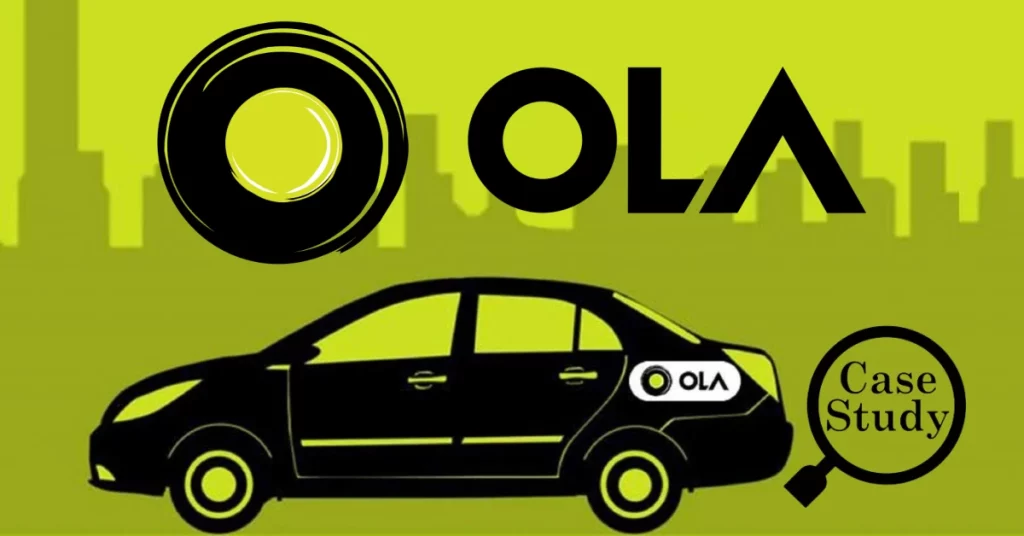
What’s the first thing that comes to your mind after hearing the term “Ola”? Online cab booking! Isn’t it? Have you ever wondered how Ola became synonymous with online booked cabs? Due to its successful operations and services. Well, that’s true. But apart from that numerous other factors have also played crucial roles to make the cab-booking start-up successful. So, in this write-up, we will shed light on Ola Case Study and will decode the success story of Ola.
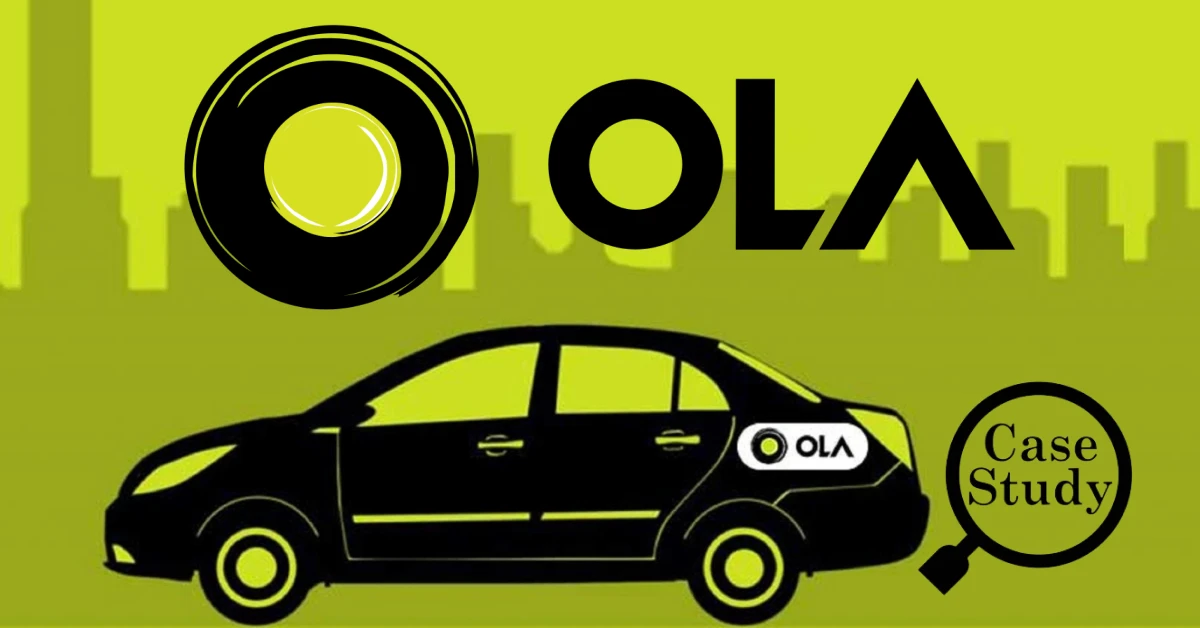
Stay tuned!
Ola: A Brief Overview
Ola, originally known as Ola Cabs, is a successful Indian ride-hailing company that has revolutionized the cab booking industry. The success story of Ola is a result of the visionary thinking and perseverance of its co-founder, Bhavish Aggarwal.
The name “Ola” was derived from the Spanish word “Hola” meaning “Hello” or greetings. Before diving deeper, let’s have a brief overview of the company-
History of Ola
The birth story of Ola begins with the difficulty faced by Bhavish Aggarwal (Founder). How? When he was unable to find a reliable cab.
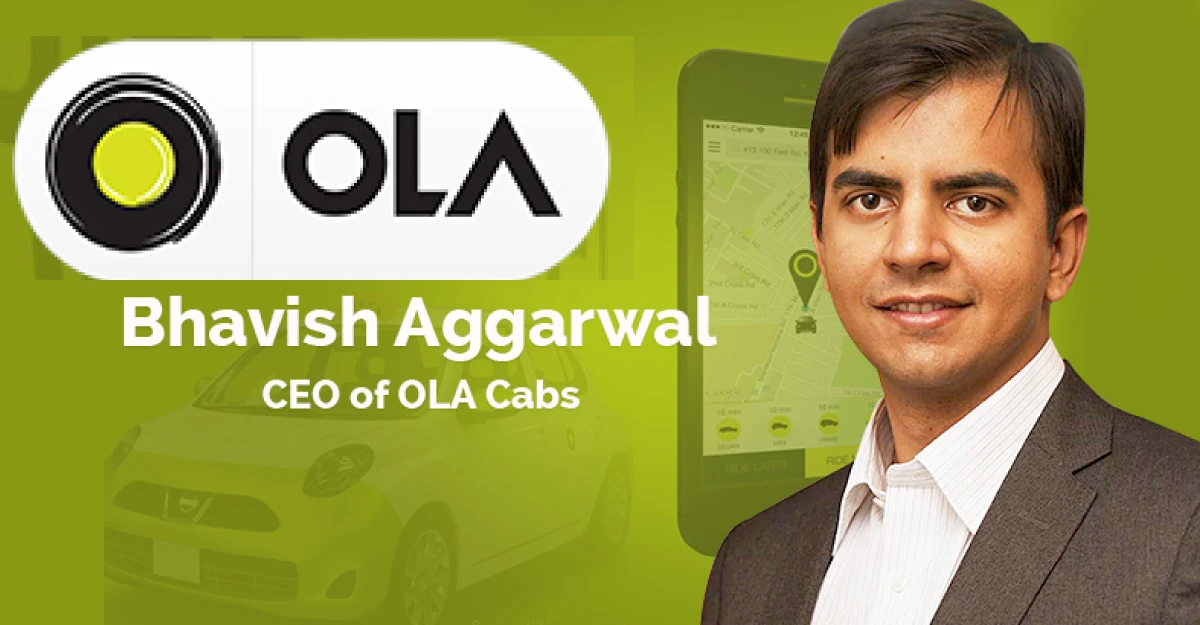
Ola was established on December 3rd, 2010, to address the pain points faced by commuters in India. Bhavish Aggarwal, while he was traveling from Bangalore to Bandipur, faced difficulties in finding a reliable cab.
You too, might have faced this sort of difficulty a decade back! Didn’t you? So, what did you do at that time? Contacting a local taxi aggregator with fluctuating prices was the only solution. This problem sparked the idea of creating a platform that would connect passengers with cab drivers efficiently and conveniently. The affordable and standard price of cab bookings was the cherry on top.
What problem did Ola solve? The cab booking problem!
From its humble beginnings, Ola quickly gained traction and became one of the fastest-growing startups in India. It surpassed its global rivals like Uber and Meru Cabs. Thus, it became India’s leading ride-hailing platform.
Ola’s Journey
The successful journey of Ola has been marked by rapid growth, strategic partnerships, and innovations. It introduced features like Ola Money, a digital payment solution, and Ola Share, a carpooling service aimed at reducing traffic congestion and promoting eco-friendly transportation options.
In addition to ride-hailing, Ola ventured into other segments like food delivery (Ola Foods) and electric vehicle infrastructure (Ola Electric). Ola Electric gained attention for its plans to build a network of electric vehicle charging stations and develop electric two-wheelers.
Ola’s success can be attributed to various factors such as its user-friendly app, wide availability of cabs, competitive pricing, and focus on customer satisfaction. We will dig deeper into these factors in the next section.
Key Factors that attributed to Ola’s success
This is the most important part of the Ola case study. The success story of Ola can be attributed to the following key factors-
(A) Innovative Business Model
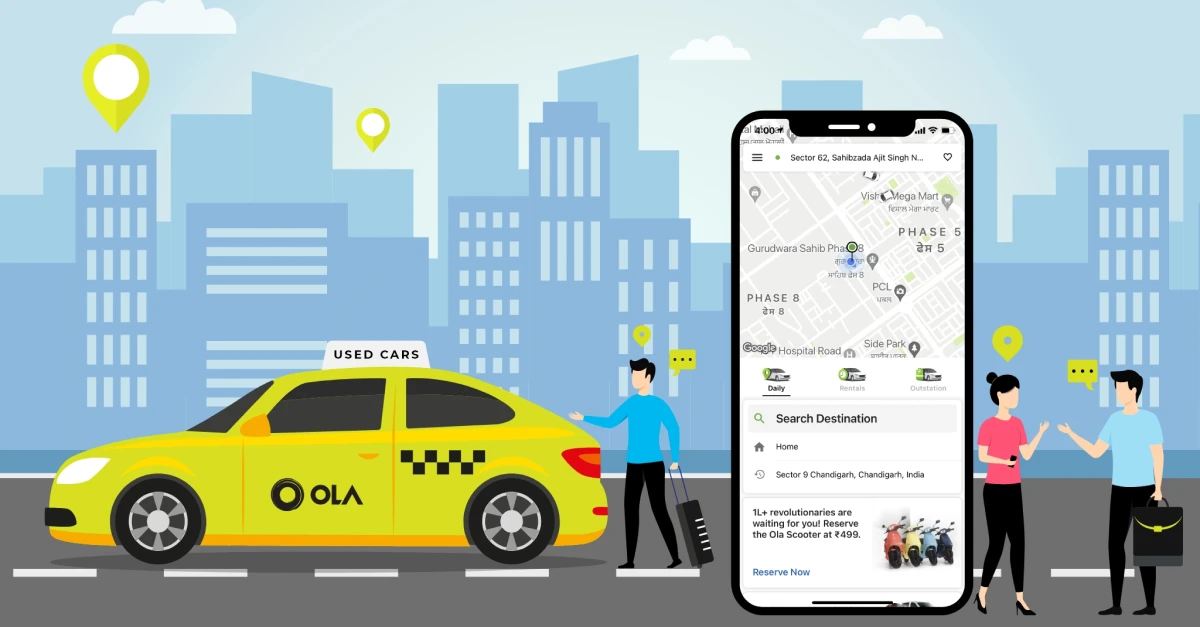
Ola introduced an innovative business model by offering a convenient and affordable alternative to traditional taxi services. It is based on the concept of the “ sharing economy .” It connects passengers needing rides with drivers who use their vehicles.
Some of the highlighting features of the Ola Business Model are-
(A.1) Asset Utilization
Ola optimizes the use of existing resources (drivers’ cars). How? By providing a platform for drivers to offer rides when they have available time, increasing the utilization of their vehicles.
(A.2) Flexible Income
Drivers have the flexibility to work when they want, allowing them to earn income on their terms. This can be particularly appealing to those seeking part-time or flexible employment.
(A.3) Convenience
Passengers can request rides using the Ola app, which provides real-time tracking, cashless payments, and a seamless booking process.
(A.4) Dynamic Pricing
Ola employs a dynamic pricing model (surge pricing) during peak demand times. This feature incentivizes more drivers to come online, ensuring passengers can find rides even during busy periods.
(A.5) Inclusive Model
Ola has expanded beyond urban areas, providing transportation services to underserved and remote regions. Thereby, it enhanced mobility and connectivity.
(A.6) Data Utilization
Ola collects data on travel patterns, demand, and user preferences. This feature enables them to optimize their services, improve efficiency, and offer tailored promotions.
Thus, Ola’s innovative business model leverages technology, data, and a decentralized workforce to transform the transportation industry. It aims to provide affordable and convenient ridesharing services to a wide range of customers.
(B) Diverse Revenue Sources: How Does Ola Make Money?
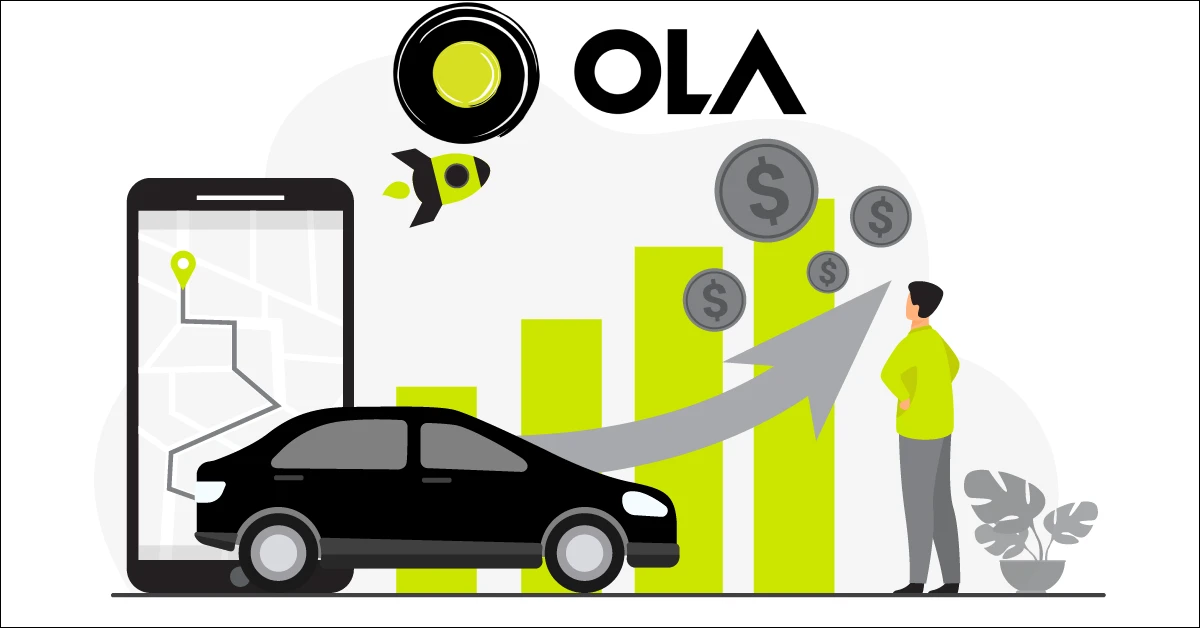
In fiscal year 2022, Ola earned revenue worth Rs.1,970 crore ($250 million). That’s quite impressive. Isn’t it? This fact boils down to one question. How does Ola make money? Ola generates revenue primarily through the following sources-
(B.1) Ride-Hailing Services
As you know, Ola’s core business involves ride-hailing services to customers. The company earns money by charging passengers for the rides they take. The fare charged is usually based on factors such as distance traveled, time taken, and other applicable fees.
(B.2) Commissions from Drivers
Ola takes a percentage of the fare as a commission from its drivers, who operate as independent contractors. This commission varies by region and service type.
(B.3) Surge Pricing
This is a very interesting source of revenue. How? You may ask. Due to its fluctuation! Isn’t Ola famous for its standardized pricing? Yes, it is true. But the pricing changes as per the traffic on the road! During peak demand periods or high-traffic situations, Ola may implement surge pricing. This feature temporarily increases the fare to incentivize more drivers to be available. This allows Ola to generate higher revenue during times of increased demand.
(B.4) Subscription Plans
Ola offers subscription plans that allow users to pay a fixed fee upfront for a certain number of rides or a specific period. These plans provide a sense of convenience and predictability for frequent riders.
(B.5) Food Delivery (Ola Foods)
As you have read above, Ola introduced a food delivery segment too! Through Ola Foods, it earns revenue by charging restaurants a commission on orders placed through its platform. Thus, it competes with major food delivery platforms like Zomato and Swiggy . Although Ola has stopped and re-launched Ola Foods multiple times. But as of now, it operates through cloud kitchens .
(B.6) Ola Money
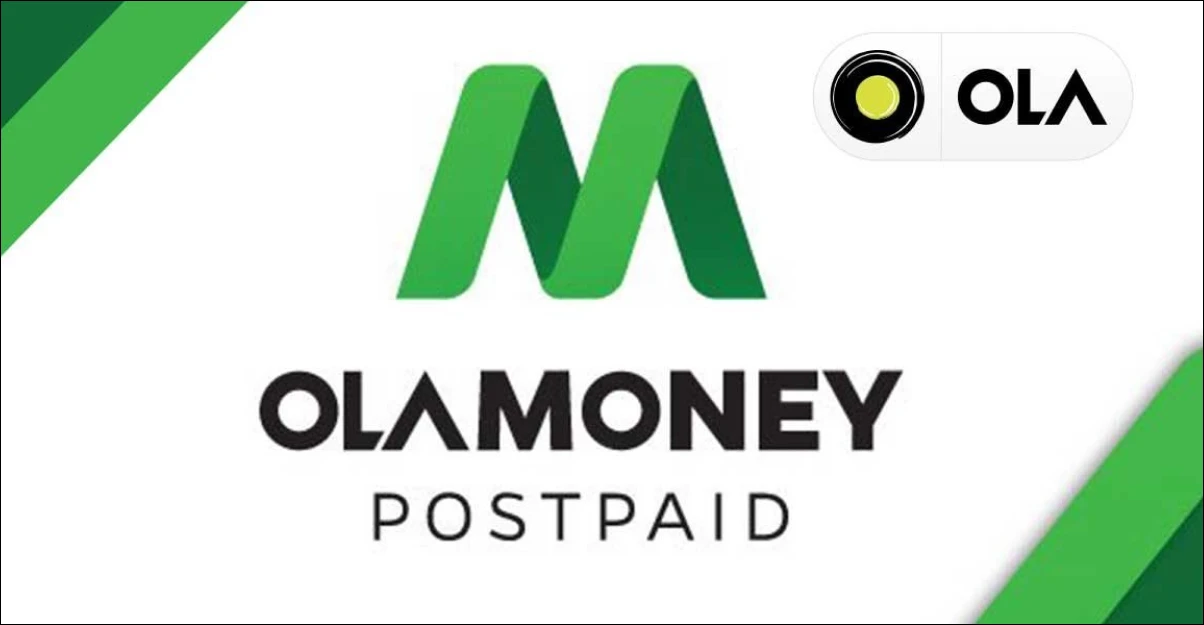
Ola has a digital wallet called “Ola Money.” Users can add funds to their Ola Money wallet. You can use it to pay for rides, food orders, and other services within the Ola ecosystem. Ola earns money through transaction fees and by investing the funds in the wallet.
(B.7) Advertisements and Partnerships
Ola collaborates with brands for promotional campaigns or advertisements within their vehicles or app. Such partnerships provide an additional stream of revenue.
Thus, these revenue streams collectively contribute to Ola’s overall financial performance and growth.
C) Market Disruption
Do you know what is the most impressive part of the Ola case study? Its market disruption strategy! Ola disrupted the traditional taxi industry in India through its innovative business model. By leveraging technology and a user-friendly app, Ola transformed the way people access and use transportation services. It offered a convenient and cashless booking process, real-time tracking, and dynamic pricing, which were absent in traditional taxis.
(C.1) Part-time drivers
Ola’s model empowered a large number of individual vehicle owners to become part-time drivers, significantly increasing the supply of available rides. This led to reduced waiting times and increased accessibility for passengers, challenging the monopoly-like hold traditional taxis had on the market.
(C.2) Cost-Effective Model
Additionally, Ola introduced cost-effective carpooling options, promoting resource optimization and reducing congestion. Ola case study is incomplete without its cost-effective model. We have explained it in the previous sections in detail. The dynamic pricing mechanism during peak hours ensured that even during high-demand periods, users could find rides, thus addressing a common pain point with traditional taxis.
(C.3) Sharing Economy
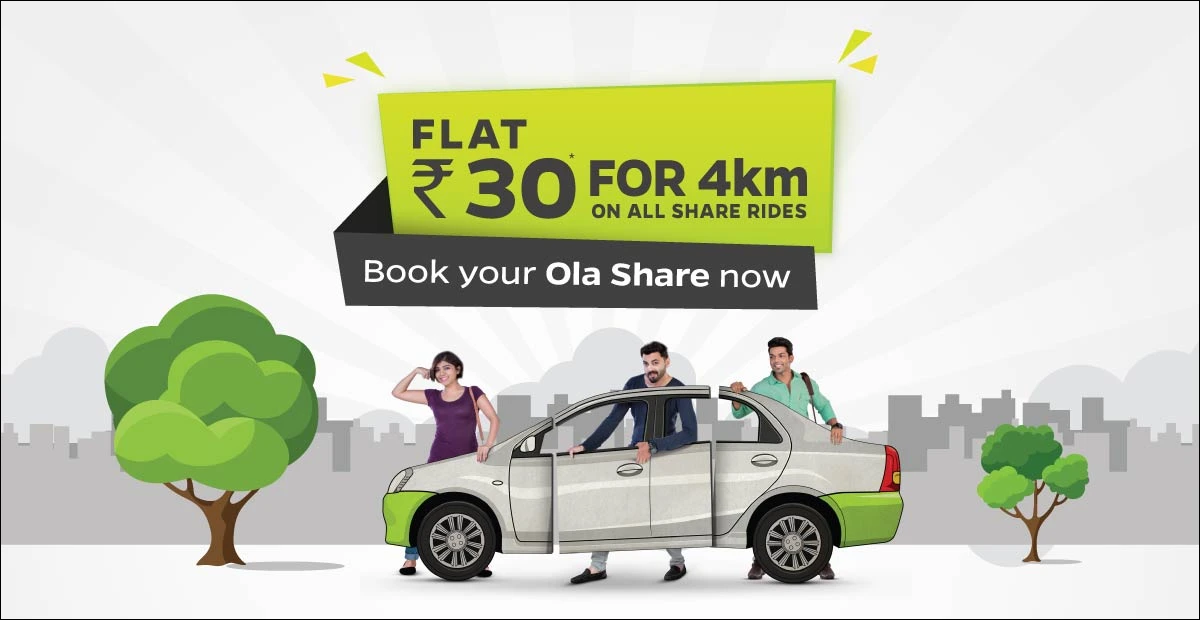
By embracing the sharing economy, Ola not only provided affordable transportation alternatives but also created flexible income opportunities for drivers. The traditional taxi industry is often burdened by regulatory complexities and inconsistent service. It struggled to keep up with Ola’s tech-driven convenience and efficiency. You can say that Ola disrupted the traditional taxi landscape in India by introducing an innovative, technology-driven platform. It offered convenience, efficiency, affordability, and income opportunities. Thus, it led to a paradigm shift in how people perceive and use transportation services.
(D) Strategic Expansion
It is a crucial part of Ola case study. Ola strategically expanded by diversifying its services beyond ride-sharing services. It introduced several subsidiaries and services-
Some other services of Ola are-
- Ola Fleet : It involves the leasing of taxis to partnered drivers
- Ola Foods : Do you know, Ola acquired the Indian subsidiary of Foodpanda in 2017? With this, Ola entered into the food delivery segment. Thus, it competed with Z omato & Swiggy .
- Ola Financial Services : In 2015, Ola launched mobile payments and wallet services in the Ola app. It was called OlaMoney. It offered lucrative financial services like buy now pay later, insurance, vehicle loans, and credit cards.
- Ola Electric : Ola Electric Mobility is an Indian electric two-wheeler manufacturer, based in Bengaluru. It was established in 2017 as a wholly-owned subsidiary of ANI Technologies, the parent entity of Ola Cabs.
- Ola Ambulance: Ola has been providing Ola Emergency medical care services in several cities throughout India since Covid-19. It enables citizens to access essential medical care without any delay. (However, there are no latest updates on Ola Emergency Services. In case we find any authentic and latest reports, we will update you soon!)
(E) Global Expansion
Ola ventured into international markets too! Yes, it established its presence in-
- United Kingdom
- New Zealand
These expansions aimed to increase market share, and revenue streams, and create an ecosystem of interconnected services. By adapting to evolving consumer needs and exploring new territories. Ola aims to secure a competitive edge in the global transportation and mobility industry. Thus, Ola case study emphasizes on the significance of global expansion.
(F) Sustainable Practices
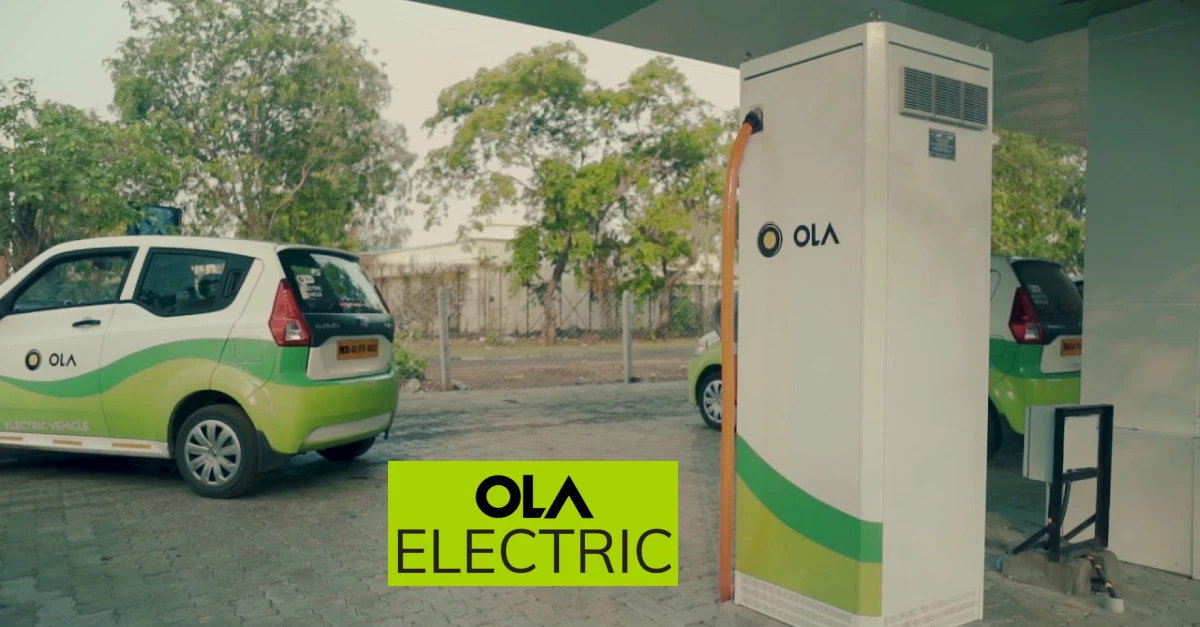
Ola Cabs incorporates sustainable practices by introducing electric vehicles (EVs) into its fleet. This initiative aims to reduce carbon emissions and promote clean transportation. They implement ride-sharing to optimize vehicle usage, reducing traffic congestion and pollution. Ola also focuses on driver-partner welfare, offering benefits and training programs. Sustainable practices are the important part of Ola case study.
The Ola “ Mission Electric ” initiative aims to pledge to reject petrol vehicles and opt for e-vehicles. It committed to introducing electric vehicles and reducing global emissions and fossil fuel dependency. It wants to make India, the epic center of electrification.
The company invests in charging infrastructure and collaborates with governments for EV adoption. These practices contribute to a greener environment, lower carbon footprint, and a more sustainable urban transportation ecosystem.
(G) Customer Centric Approach
Ola’s customer-centric approach prioritizes delivering a seamless and personalized experience to users. They focus on understanding customer needs, enhancing service quality, and promoting convenience. Ola’s app interface, real-time tracking, diverse ride options, and responsive customer support exemplify their commitment to user satisfaction. Regular feedback integration and loyalty rewards reinforce this approach, ensuring Ola continually evolves to meet and exceed customer expectations, fostering lasting relationships and loyalty.
In the Ola case study, its success story is characterized by its innovative approach to transportation, strategic expansion, and continuous efforts to improve customer satisfaction. Thus, it became a prominent player in the ride-hailing industry.
How Ola is different from its contemporary cab services?
Ola differentiates itself from other cab services through its innovative pay-per-performance model for drivers and its commission-based earning structure for every taxi booking. This unique approach allows Ola to attract drivers and incentivize them to provide excellent service to customers.
Also, it differentiates itself from its contemporary cab services through its innovative features. Such as an extensive range of ride options, a user-friendly app interface, etc.
Unlike its competitors, Ola offers various vehicle choices, including economy, premium, and shared rides, catering to diverse customer preferences. The app’s intuitive design simplifies booking, real-time tracking, and cashless payments. Ola’s focus on localized features, such as language preferences and in-app entertainment, sets it apart. Additionally, Ola’s commitment to sustainability, electric vehicle integration, and driver welfare showcases its forward-thinking approach. These elements collectively distinguish Ola case study as a holistic and customer-centric ride-hailing platform.
Market Share of Ola
In terms of market share, Ola has been a dominant player in the Indian online taxi services market. In FY 2022, Ola’s market share accounted for approximately 59%. Back in FY 2019, Ola accounted for approximately 72.44% of the total revenue generated by the online taxi services market in India. However, it’s important to note that market dynamics can change over time. As of September 2019, Ola and Uber had market shares of 35% and 45% respectively. But now their market share is 50% and 41% respectively. This indicates a competitive landscape with fluctuating shares.
Note : We have written a detailed comparison on the topic “ Ola vs Uber: Which one is doing better business in India? ” You can look into it for more information.
Why was Ola banned?
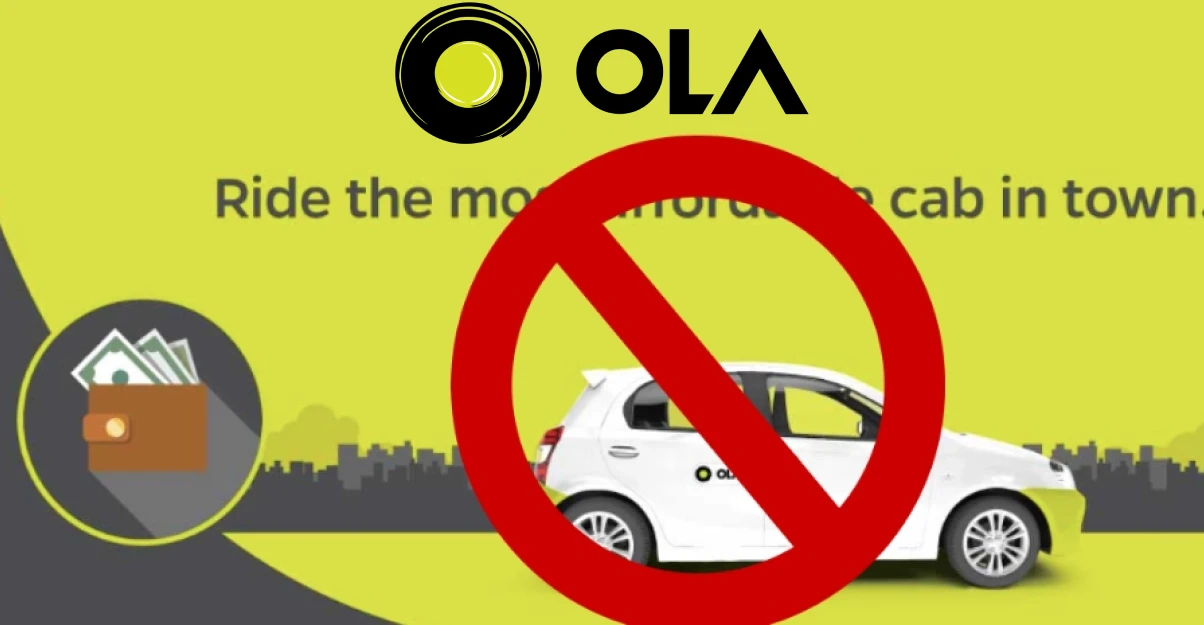
On March 2023, the Delhi Government banned online taxi services including that of Ola, Uber, and Rapido bikes. Reason? The government banned Ola citing violations of the Motor Vehicles Act, of 1988. It made aggregators liable for a fine worth Rs.1 lakh.
As per the amendments made in the Motor Vehicles Act in 2019, the aggregators weren’t permitted to operate without a valid license. The government didn’t want the aggregators to compromise the safety of customers. That’s why only those with invalid licenses were banned.
Challenges Faced by Ola
Apart from the ban described above, Ola faced numerous challenges that also impacted its operations. Some of the major challenges were-
1. Regulatory Hurdles
Ola has often encountered regulatory challenges in various regions due to the disruption it brought to the traditional taxi industry. Local governments and taxi unions have raised concerns about Ola’s business model, safety standards, and the classification of drivers as independent contractors.
2. Competition and Market Saturation
Ola has faced intense competition from other ride-hailing platforms, especially Uber. The struggle for market dominance led to price wars and aggressive discounts, impacting Ola’s profitability and brand image. As the market became saturated, customer acquisition became more challenging.
3. Driver Partner Relations
Maintaining a healthy relationship with its driver-partners has been a challenge for Ola. Concerns over fare cuts, incentive changes, and working conditions have led to protests and strikes by drivers, affecting the company’s operations and reputation.
4. Economic and Financial Factors
Economic downturns and fluctuations can impact consumer spending habits, affecting Ola’s ride demand and revenue. Maintaining profitability and financial stability in such conditions is a continual challenge.
Future Plans of Ola
In terms of expansion, Ola has plans to extend its services to 500 towns, bringing shared mobility to 500 million people. They have begun aggressive expansion overseas too! Additionally, Ola is venturing into new avenues of transportation. By the end of 2023, they are set to launch a motorbike. This plan is followed by the introduction of a battery-powered car in 2024. These upcoming vehicles will further expand Ola’s presence in the mobility sector.
Overall, Ola Cabs is dedicated to embracing electric mobility and expanding its services to reach millions of people across different towns. Through their “ Mission Electric ” initiative, they aim to contribute to a sustainable and eco-friendly future. Also, providing convenient transportation options to its customers is one of its essential features.
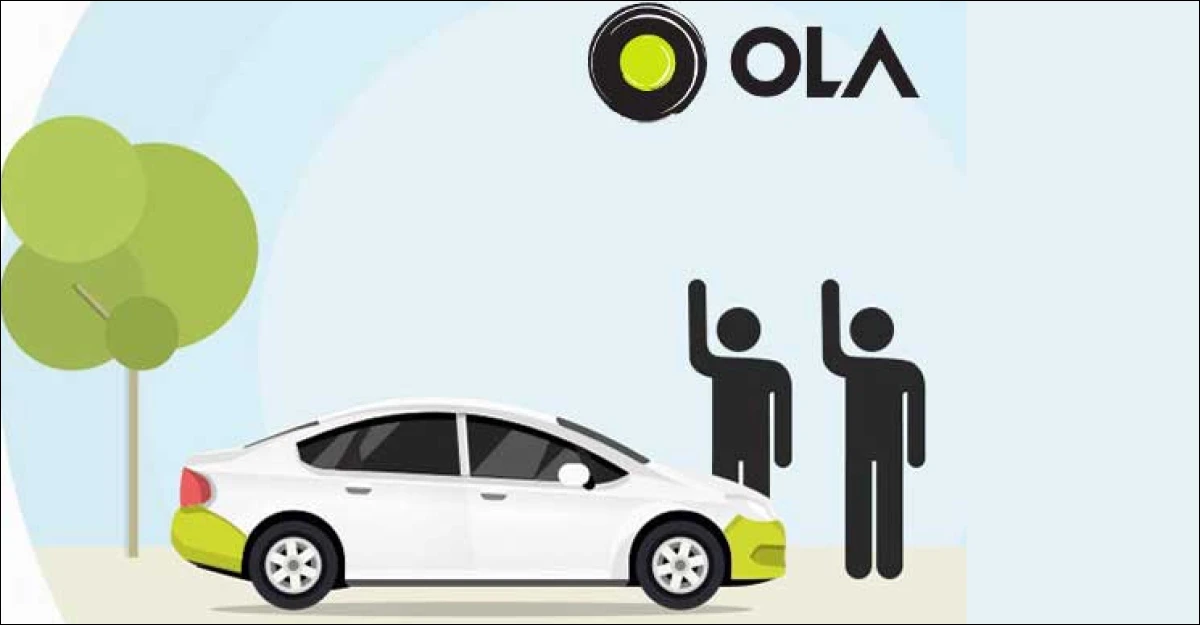
Startups are one of the key players in the nation’s development. Not only it boosts innovation but also provides employment and services. However, as per the statistics, startups have extremely high mortality rates. Reason? Lack of strategic planning, humongous losses, expenditures, etc. Fortunately, some startups have turned the tables in India with their successful operations. And Ola is one of them!
Ola case study is a popular success story in the Indian startup ecosystem. It exemplifies the power of innovation, entrepreneurship, and understanding the needs of the market. By leveraging technology, Ola created a platform that transformed the way people commute in India, providing convenience and reliability.
Overall, Ola’s success can be attributed to its commitment to providing a seamless and efficient cab booking experience to its users. It became a kingpin of online cab booking services. All thanks to its constant efforts to adapt to changing market dynamics.
Related Posts:
Really impressive and informative thanks supti ….😊😊🤗❣️
It was a knowledge gainer and well research drafted. I am eager to know how Ola initially persuaded Taxi drivers to operate on their App Whether it was D2C or by digital marketing.
Contact Info: Axponent Media Pvt Ltd, 706-707 , 7th Floor Tower A , Iris Tech Park, Sector 48, Sohna Road, Gurugram, India, Pin - 122018
© The Business Rule 2024
- Español – América Latina
- Português – Brasil
- Tiếng Việt
Ola drives mobility for a billion Indians with Progressive Web App
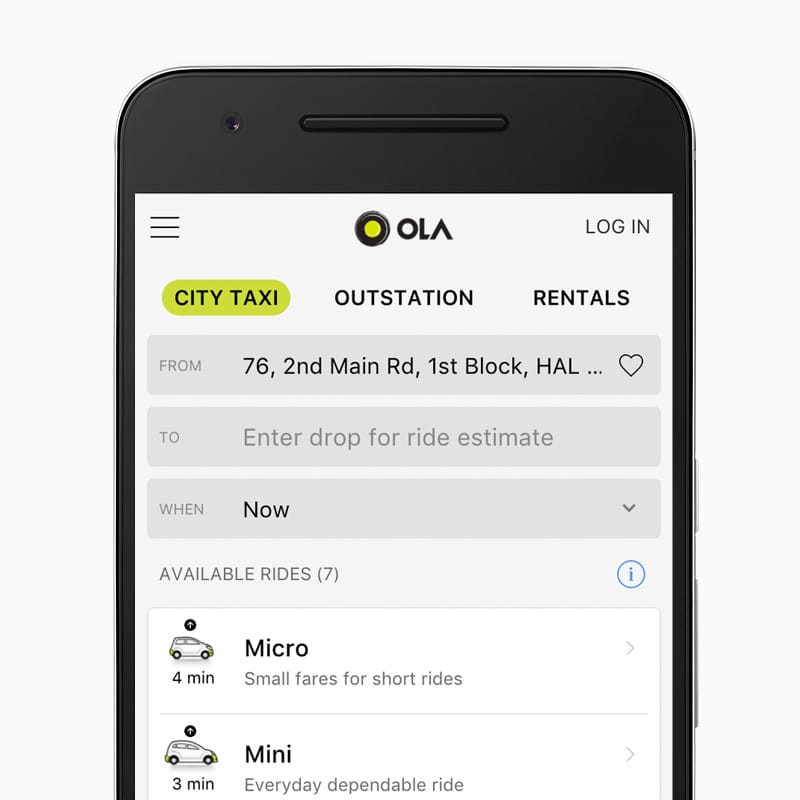
Ola is the leading cab aggregator in India, with a relentless mission to drive mobility for a billion Indians. The company reaches over 100 Indian cities with a network of about 600K driver-partners. As one of India’s most highly valued startups, Ola completes more than a million daily rides, fighting for the lion’s share of the country’s estimated 300 million daily taxi trips.
- 68% increase in mobile traffic in Tier 2 and 3 cities
- In Tier 2 cities conversion rates are same as native app. In Tier 3 cities, conversion rates are 30% higher with the PWA.
- PWA application size is 200KB, which is 300x smaller than downloading an Android app and more than 500x smaller than the iOS app
- 20% of users who book in their PWA had prev. uninstalled their app
Tier 2 and Tier 3 cities (cities with populations of 20,000 to 99,000) pose unique challenges and opportunities for Ola. Demand for sustainable, reliable transport services is growing rapidly and is eagerly anticipated in these areas. People in these cities often deal with intermittent cellular connectivity and have low-end smartphones with low memory and slow processors. These users are less apt to download and store native apps on their smartphones because native apps require high data usage and take up a lot of space —the Ola Android app is a 60MB download and the iOS app is 100M. It was clear that Ola needed a different way to reach these users.
The mobile web presented a perfect solution. It offers easy discovery and low friction—users just click a link instead of downloading an app. Other advantages include push notifications, and the “Add to Home screen“ user prompt. As Dipika Kapadia, Ola’s head of consumer web products notes, “Apps have many advantages but must be developed for different operating systems, while a single site is good for any browser.”
Ola built their mobile website as a Progressive Web App (PWA). Using just 200KB of data to install, the PWA is at least 300X smaller than downloading the Android app and 500X smaller than downloading their iOS app. Repeat visits use as little as 10KB. This low data consumption translates into a 3.4-second first visit and less than a second for repeat visits on 2G and 3G networks—an ideal solution for millions of Indians.
Ola also noticed that 20% of users who book using their PWA had previously uninstalled their app. By reducing the amount of storage space needed, the PWA allowed them to effectively re-engage with their previous app users.
Having a fast, engaging mobile website means we’re no longer turning away potential users who don’t want to use data or space to download an app. Dipika Kapadia, head of consumer web & corporate products, Ola
The PWA is helping Ola reach a broader set of users in new cities. They’ve seen mobile traffic from Tier 2 and Tier 3 cities grow by 68%. Since launch, conversion rates on the PWA have been the same as their native app in Tier 2 cities, and for Tier 3 cities, conversion rates are 30% higher on the PWA.
A future without apps?
Well, not exactly. For Ola, having both a native app and a PWA just makes sense. By skipping the requirement that users install an app, Ola believes their PWA is tailor-made for the low-end devices. Users can now use either depending on their location and bandwidth.
There’s no need to choose between the web and the app. Today, we believe Ola is set for its next stage of growth. We intend to balance the two and have both strategies in play. Ankit Bhati, Co-Founder & CTO, Ola
Except as otherwise noted, the content of this page is licensed under the Creative Commons Attribution 4.0 License , and code samples are licensed under the Apache 2.0 License . For details, see the Google Developers Site Policies . Java is a registered trademark of Oracle and/or its affiliates.
Last updated 2017-05-17 UTC.
- Revolutionizing Digital Communication: The Power of Olly and AI
- AI-Powered Video Editing with Snapy.ai: The Future of Content Creation is Here
- Dawn of AI-Powered Video Editing: Transform Your Videos with Silence Remover Online
- The Dawn of Generative AI: Why and How to Adopt it for your Business
- Harnessing the Power of Generative AI for Business Innovation: An Exclusive Consultancy Approach
Original content with a single minded focus on value addition.

Ola case study: The story of a Millionaire without a car
With this piece, we take a look at the Ola case study. Essentially discovering how Ola came into being, understanding their business model and finally what’s next for them. Let’s jump right in the story.
The Ola case study: The story of Ola
The year is 2010. Bhavish calls a taxi service portal to rent a taxi. He has to travel to Bandipur from Bangalore. He’s already in a rush and the driver is still not here. Helpless, he sits there waiting for his taxi to pick him up.
The driver comes and Bhavish boarded the car. He thought there’s no point of questioning the driver why he is late. He already knows the driver’s answer. Quietly, he is waiting for his destination to arrive soon.
The jungle arrives. To Bhavish surprise, the driver stopped the car in the middle of the jungle.
Bhavish: “Why have you stopped the car?”.
Driver: I won’t go further.
Bhavish: But why?
Driver: Road is dangerous ahead. I’ll charge extra for it.
Bhavish: It makes no sense. We have already fixed the price. You should have charged considering all the factors.
Driver: No, I won’t go until you pay me more.
Bhavish thought if he’ll deny payment to the driver, he won’t resist and will continue at the fixed price. But the driver leaves him in the middle of the jungle and returns back to Bangalore. It left Bhavish infuriated.
While walking back, Bhavish realises he has to do something about this issue. He is seeing an opportunity that will turn the life of millions. And this is how OLA cabs came to existence !
Business model: How does OLA Work?
Most people think Ola is a taxi service business. If you’re one of them, then you are slightly wrong.
Ola is a taxi aggregator business. They act as an intermediary between taxi drivers and customers. The company partners with private taxi owners, provide them process and technical equipment for booking through the Ola app.
They follow the ‘Asset Light Model’ where a business owns few capital assets in comparison to the value of its operations. Ola has given full autonomy to drivers by making them entrepreneurs. This way Ola doesn’t have to worry about car’s EMI cost, petrol cost, maintenance cost, driver’s salary, etc. Ola has become highly profitable because they only have to invest in technological advancement. It’s a win-win for both Ola and the drivers.
Revenue model: How does OLA earn money?
Ola charges a 15% commission on every ride . For example, if a ride costs Rs.200 to the customer, Ola will claim Rs.30 and the remaining amount will go in the pockets of the driver.
Ola has been doing 1.5 million rides approximately on a daily basis which means they are at least earning half a million daily.
Ola has introduced a ‘Minimum Business Guarantee’ model which ensures every driver earns Rs.1300 daily. If unable to do so, Ola adds money to the driver’s account linked to Ola after deducting it’s 15% commission.
Other revenue streams of Ola
- Ola Money: Joined the league of Paytm, PhonePe, AmazonPay, etc. through which customers can make payments to various vendors as well as for their ride.
- Ola Prime Play: Providing a comfortable and more personalized experience to customers at the nominal fee.
- In-cab advertisements: Use of promotional tools like brochures, leaflets, etc. to promote different brands who are ready to pay.
- Cab leasing: The company purchases the car and then lease it out to the drivers. It helps in building asset value as well as bring revenue in the form of the fee charged from drivers.
- Corporate tie-ups: Creating customized packages for the corporates and their employees at a subsidized rate.
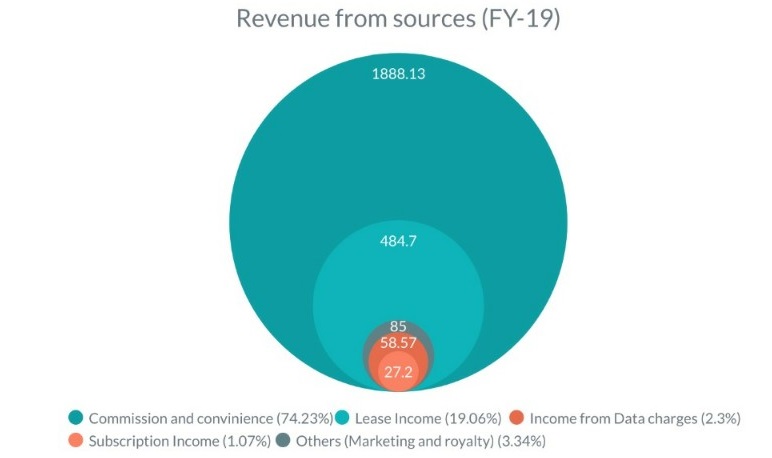
OLA VS UBER:
One cannot talk about OLA, without mentioning Uber. Uber came in India after 3 years of Ola and according to Bhavish, he had never heard of Uber before. There is a continuous fight between both the companies for the largest market share. Currently, Uber operates in 58 cities while Ola in 250 cities. While Uber has said in its recent report that It has more than 50% of market share in India but no evidence was presented.
Being the leader in the market is significant for both players. While India is the home market for Ola and it is holding that spot of the largest market share, managing its profitability is crucial as it plans for a public market listing in 2021. For Uber, India continues to be an important market for the company to drive growth in terms of the number of rides.
A big advantage of Uber is the number of drivers downloading its app. On this parameter, Uber has left Ola far behind. In the coming future when the only factor will be availability, the company with a larger number of drivers will succeed, and right now Uber seems to win that battle.
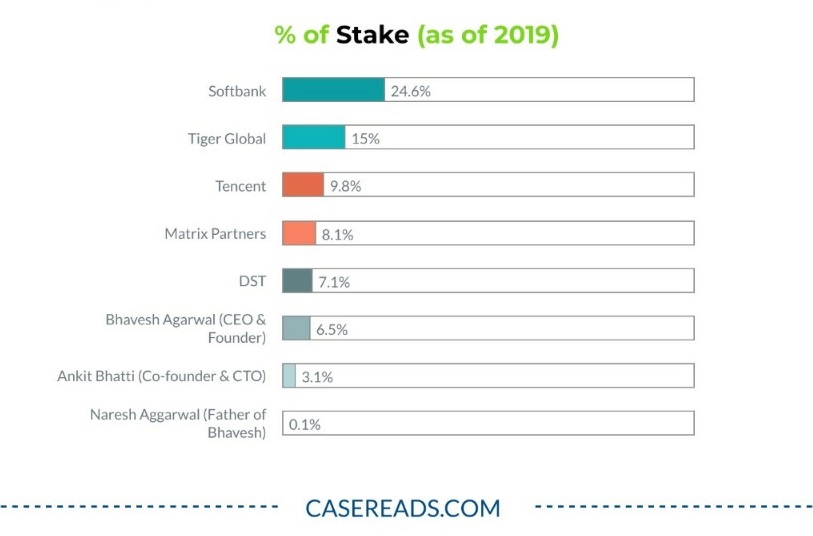
What’s Next?
Ola electric mobility : Ola’s mission was to put 1 million electric vehicles on Indian roads by 2021. It even got a thumbs up from Softbank who invested $250 million in Ola’s mission.
Then the pandemic happened!
Like many of its brethren, Ola is conserving cash. They have cut down 1400 jobs, about a 1/3rd of its Indian workforce. The pandemic has forced travel and transportation space to halt their expansion plans. Even Uber has furloughed 6700 employees globally. In response to the fear of the hailing cab now, Ola is planning to install shields between drivers and passengers. Sanitizing cabs, providing sanitizers and masks to drivers, etc. to convince the customer that riding with Ola is safe.
Global domination: Since 2018, Ola has expanded its operations in Australia, UK, and New Zealand. And as the pandemic situation has been brought under control in Australia and New Zealand, companies see a huge opportunity.
The single market that Ola is betting on is London. As Ola estimated, it is as big as all of India. On the other hand, uber’s license was revoked due to continuous compromise made with the security of its riders. Ola has already signed up tens of thousands of drivers before the pandemic. Now, as the situation improves and the economy is slowly opening, people are getting back to normal life.
Again, Bhavish sees a business opportunity in the current distress which is may yield him a huge profit in the coming time.
This interesting piece was penned by Rishita Bansal . She is a brand planner & storyteller. If you liked the piece, share it with your best friend on WhatsApp or LinkedIn .
If you are a business student, you must absolutely follow us here .
ola case study, ola case study, ola case study, ola case study, ola case study, ola case study, ola case study, ola case study, ola case study, Story of ola, Story of ola, Story of ola, Story of ola, Story of ola, ola case study
- 7Ps of Marketing Mix: Explained well with examples
- [Part 2] “Design thinking, the need of the hour”: The Placement Season of 2020
You May Also Like
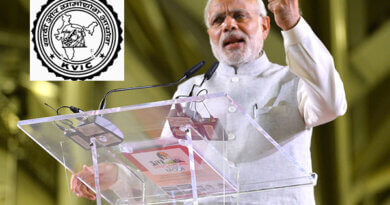
What is KVIC? – An epitome of ‘Aatmanirbhar Bharat’

Indian Deodorant Industry: How FOGG changed the game?
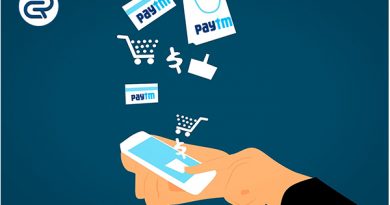
Case study: The Journey of Paytm
5 thoughts on “ ola case study: the story of a millionaire without a car ”.
Ola is not taking 15 % commission
They are take More than 25 % from the Driver
Pingback: Trends in startup Space - Evolving Startup Business models
Yes ola is taking almost 30% including taxes customer service charge everything and they are giving only 10 rupees for an kilometre this 10 rupees is not only for kilometre waiting time traveling time including in this 10 rupees only for one kilometer and for 200 rp they are charging 60 rupees and for driver 140 only if I traveled for 14 kilometre 15% are all fake news
Pingback: The 101 Of How Product Innovation Works?
Great blog post! I really enjoyed reading your insights on this topic. Your writing is clear, concise, and informative. I appreciate the effort you put into researching and presenting your ideas in an engaging way. The examples you provided were very helpful in illustrating your points and making the content relatable. Thank you for sharing your knowledge and expertise on this subject. I look forward to reading more of your work in the future!
Leave a Reply Cancel reply
Your email address will not be published. Required fields are marked *
Save my name, email, and website in this browser for the next time I comment.


Ola Success Story - How Ola Became India's Leading Cab Aggregator

Shubham Kumar , Anik Banerjee
Company Profile is an initiative by StartupTalky to publish verified information on different startups and organizations.
Ola needs no introduction. The first Indian cab aggregator company, Ola has made availing of cab services a smooth experience. Owned by ANI Technologies Pvt. Ltd. and formerly known as OlaCabs, Ola was launched in December 2010 by two IIT Bombay graduates. Being a pioneer among cab companies in India, Ola bridges the gap between cab owners and commuters, and it has done so really well!
Instead of buying and renting out its own cars, Ola partners with a number of taxi drivers and owners and adds a touch of modern technology to the whole setup. This allows people to book cabs at short notice through Ola's app. Ola is India’s homegrown ride-hailing app with a little less than 50% market share (as of Uber's 2020 report) in India. It has users in over 250 cities in India and employs 2.5 million+ driver-partners.
Driven by a hyperlocal approach, Ola is committed to its mission of building mobility for a billion people. Staying in line with its mission, Ola has also ventured into auto and bike booking services. Ola also started off a bicycle-sharing service called 'Ola Pedal' in 2017 to facilitate last-mile connectivity. Read on to explore the remarkable journey of Ola, its founders, business model, revenue, growth, and more.
OLA - Company Highlights

Ola - About Ola and How it Works Ola - Industry Details Ola - Founders and Team Ola - Startup Story | How was Ola Started? Ola - Name and Logo Ola - Business Model and Revenue Model Ola - User Acquisition Ola - Funding, Investors and Valuation Ola - Growth and Revenue Ola - Product And Service Ola - Startup Challenges Ola - Partnerships Ola - Acquisitions and Merger Ola - Competitors Ola - Future Plans
Ola - About Ola and How it Works
Ola has simplified the process of cab booking. From easy payment options to keeping the passengers entertained on the go with 'Ola Play', Ola takes care of everything to ensure a smooth ride. Ola now also operates self-drive cars . Be it self-drive or cab-hailing, Ola Cabs offer a wide range of cars to choose from depending on the number of travelers, budget, and convenience. For traveling within the city, one can hire shared taxis, autos, bikes, and even e-rickshaws through Ola.
One can opt for ‘ Ola outstation ’ to travel outside the city and ‘ Ola rentals ’ to rent a cab on an hourly basis. Ola has also launched ‘ Ola Select ’, a subscription-based membership program that offers premium benefits on rides. ' Ola pedal' , Ola’s bicycle-sharing service, is already a big hit in the IIT Kanpur and the IIT Madras campuses with over 500 cycles.
In 2016, Ola launched ‘ Ola Corporate ’. When employees book their rides through Ola Corporate, the fare is deducted from the company’s Ola corporate prepaid account. Hence, companies can easily track the travel expenses of their employees while ensuring their safety.
Ola - Industry Details
India’s taxi-hailing market is valued at more than $40 Billion. The market is expected to grow at a CAGR of 6.3% between 2022-2024. The increase is supposed to happen due to the changing lifestyles of travelers and the growing disposable incomes of consumers, especially in Tier-I and Tier-II cities.
Ola - Founders and Team
Ola was founded by Bhavish Aggarwal and Ankit Bhati in 2010.
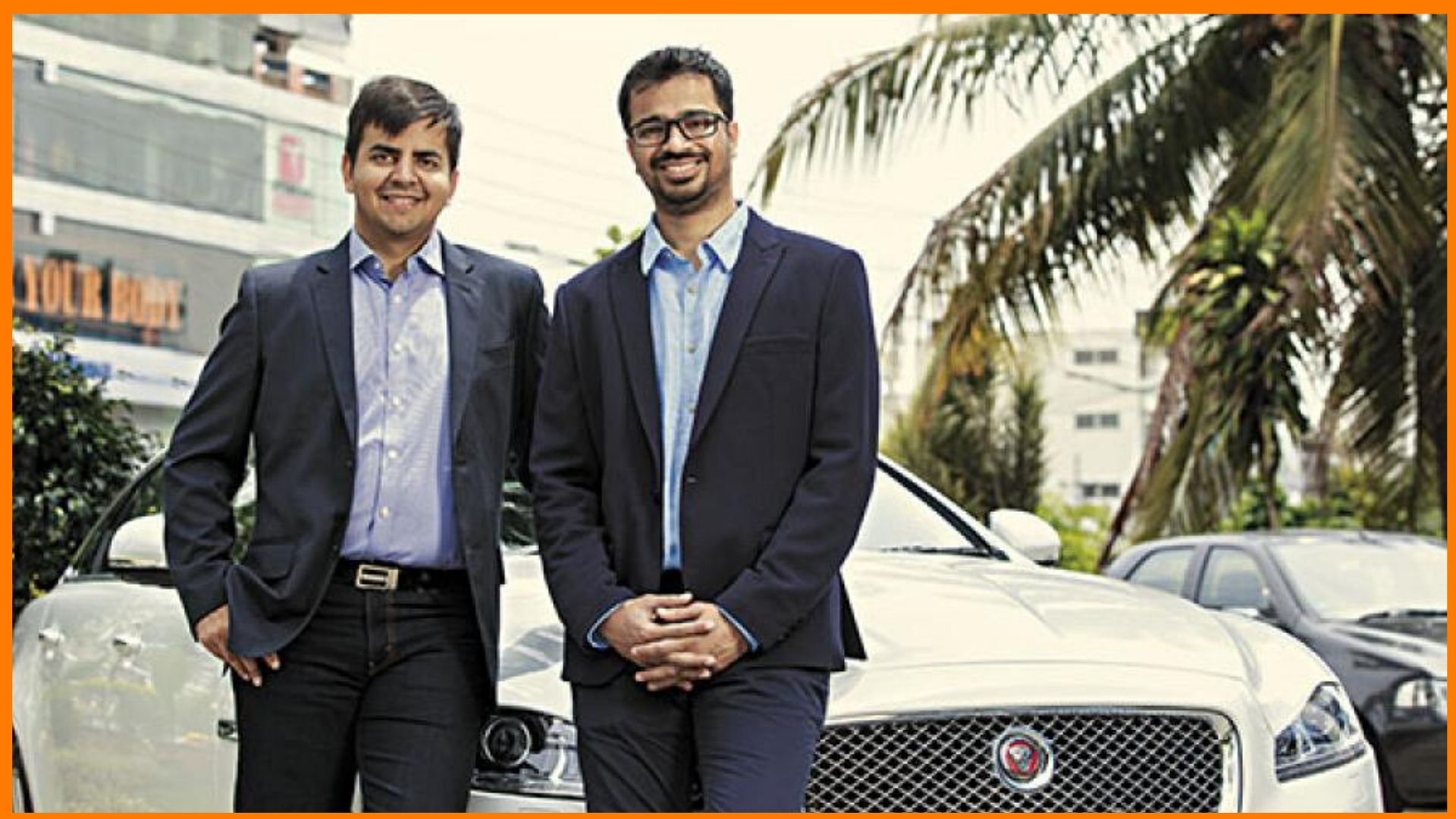
Bhavish Aggarwal
Ola founder Bhavish Aggarwal graduated from IIT Bombay with a B.Tech in computer science in the year 2008. Ola Cabs owner Bhavish worked for Microsoft Research in Bangalore for two years right after college. He filed 2 patents and published 3 research publications in international journals during his stint at Microsoft. While chasing his entrepreneurial dream, he started an online company to sell short-duration tours and holidays before transforming it into Ola Cabs. Bhavish Aggarwal is the Co-founder and the CEO of Ola. Born on 28 August 1985, OLA owner Bhavish Aggarwal's personal net worth was estimated to be around $350 Million, as per 2019 data. The wealth of Bhavish further increased to stand at Rs 7500 crore ($958.43 million) in September 2021, which also made him grab the 9th position among India's wealthiest list under 40, which also features Sachin and Binny Bansal, Neha Narkhede, Nakul Aggarwal and Ritesh Arora, and led by Divyank Turakhia, with Rs 12,500 net worth.
The Ola chief Bhavish Aggarwal will reportedly be stepping down from the day-to-day operations of the core business of Ola and will be more involved with the new and upcoming businesses of the company. The Ola company's day-to-day operations will be taken over by Arun GR, who joined in 2021 from Vedanta Resources and has previously headed as the Chief Financial Officer (CFO) of Ola Electric and Ola Financial Services, as confirmed by an internal organizational mail. Bhavish confirmed that he would not be retiring but will move on to overseeing Ola team building, product building, engineering functions, two-wheelers, car projects, quick commerce verticals, international expansion, and more.
Bhavish Aggarwal is well known for his tweets and remains quite active on Twitter and other social media platforms. He once even remarked jestingly that his tweets receive more replies than even Modiji's tweets.
In a recent tweet that came from Elon Musk, where the Tesla chief said, "Tesla will not put a manufacturing plant in any location where we are not allowed first to sell & service cars", Bhavish Aggarwal sarcastically replied with "Thanks, but no thanks!" the very next day on May 28, 2022.
Thanks, but no thanks! 🙂🇮🇳 https://t.co/yeO4qI2gg2 — Bhavish Aggarwal (@bhash) May 28, 2022
Bhavish Aggarwal, who has been known to remark on Tesla and its likely launch in India, had said again, according to the July 4th, 2022, that the EV manufacturing giant is free to put up a shop in India and sell its cars, but they are not doing that, further adding that Tesla only "want to be treated differently from others, which I believe is not in the interests of India".
Ankit Bhati
Ankit Bhati is the Co-founder and the CTO of Ola and heads the technical aspects of Ola Cabs, ensuring a quick, convenient, and instinctive experience for the customers and partners. He joined IIT Bombay in 2004 for a B.Tech in Mechanical Engineering and an M.Tech in CAD and automation. By 2009, he had already worked on several freelance projects and with startups like Wilcom, QED42, etc. Ankit finally decided to give up his nomadic professional life for his own start-up. He became part of the Ola Cabs journey in November 2010. There were speculations that Ankit Bhati has left Ola but these were nothing but rumors and falsities, as said by Ola Co-founder Bhavish.
Ahead of its IPO, Ola Chief Financial Officer (CFO) Swayam Saurabh and Chief Operating Officer (COO) Gaurav Porwal left the company in the first week of October 2021. Arun Sirdeshmukh, who was the CEO of Ola Cars, resigned from the company within less than a year of his appointment. This resignation has been confirmed by Ola CEO Bhavish Aggarwal's tweet, who said, “Arun Sirdeshmukh will move on. Wish him well.” Arun looked after the go-to-market strategy and its used cars business. The task of managing Ola Cars’ day-to-day operations was handed over to CFO, GR Arun Kumar. The Ola Cars business was decided by Ola to be reoriented on June 25, 2022. Shikharr Sood joins the list of Ola resignees. The Ola Head of Talent Acquisition resigned from the firm on July 7, 2022 . The Ola work culture is dominated by the "Act fast, think later" philosophy, as mentioned by the top 10 senior employees of Ola who have resigned from the firm.
Ola - Initial Team

After the idea, the design and vision were done by the product manager, Usha Loutongbam, and Bhavish himself. As for the developers who converted these ideas into reality, the first version for Android was built by Ajinkya Potdar and for iOS by Khushal Bokadey . Both of them joined Ola for two months of internship and did an excellent job rolling out the release in real quick time.
The iOS app was then taken over by Atul Manwar and the Android version by Ankit Kumar. Neeti Birla developed the backend APIs. The main focus of the new releases was to make the app feature-rich and improve the user experience without losing the essence of one-touch cab booking.
The Ola company currently has somewhere around 6,000 employees, as per recent updates.

Flaunt your startup with StartupTalky
800+ stories, thousands of founders, and millions of visitors. Want to be the next?
StartupTalky is where founders, entrepreneurs, startups and businesses hang out and look up to for inspiration. If you have the means, we have the medium! Inviting founders and startups who are building sustainable solutions from ground zero! Startups who run the show, StartupTalky will let the world know!
Ola - Startup Story | How was Ola Started?
Ola was launched on 3rd December 2010. There is an interesting story behind Ola's start. Born in Ludhiana, Ola owner Bhavish Aggarwal was just like every other success-driven entrepreneur. Bhavish first started an online site named Olatrip.com that offered holiday packages and weekend trips.
While trying to keep his holiday and tour planning business afloat, Bhavish had to travel from Bangalore to Bandipur for which he rented out a car. The cab experience was horrendous! The driver stopped the car in the middle of the journey and demanded a re-negotiation of what Bhavish was paying. After being refused, the driver proceeded to abandon Bhavish en route to his destination.
This is when he realized how his plight was probably similar to a lot of customers across the country who were looking for quality cab services. Bhavish saw the potential of an extraordinary cab booking service, and he changed Olatrip.com's business model to the one we know today as Ola Cabs.
Bhavish on-boarded his co-founder Ankit Bhati for taking Ola Cabs forward. Bhavish's parents didn’t agree with his startup plans in the beginning. They were thoroughly displeased with his decision to become a ‘travel agent’. Nevertheless, his parents became supportive once OLA got its first round of angel investment from Snapdeal founder Kunal Bahl, Rehan Yar Khan, and Anupam Mittal.
Bhavish believes that anyone can have a good business idea but to implement it successfully, one must have a scalable model to power the business. According to him, the best or one of the safest models one can or should adopt is running a business while owning “zero” inventory.
Ola - Name and Logo
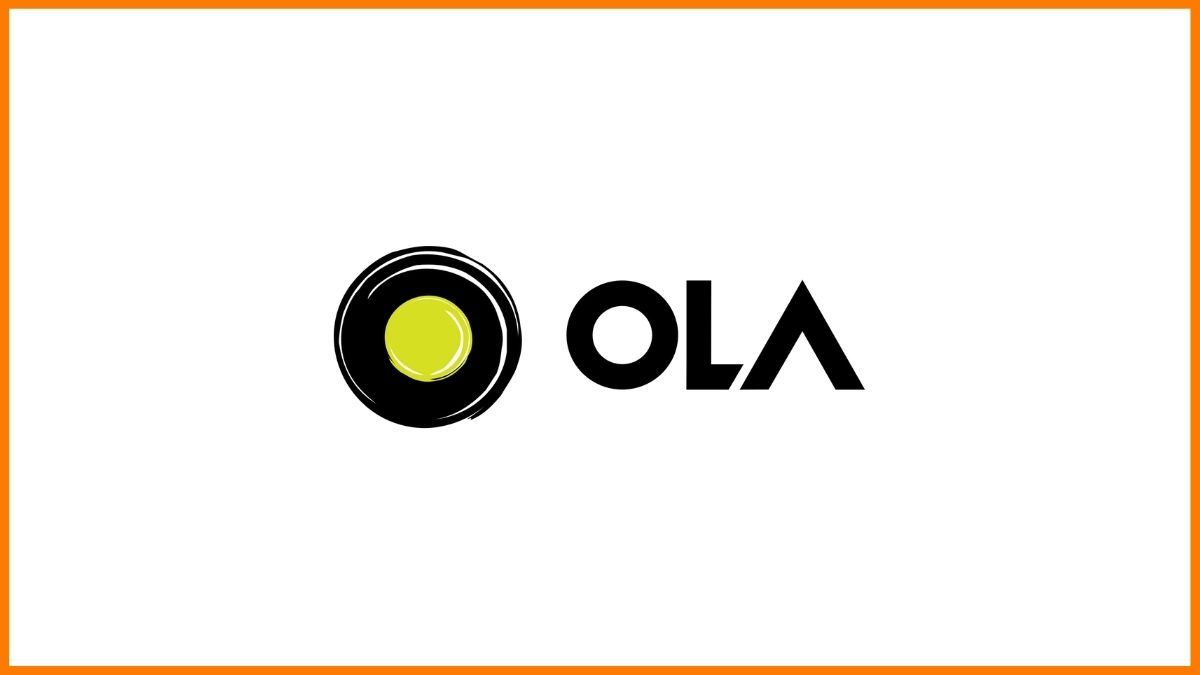
If you believe that Ola is some sort of abbreviation or short form, you are wrong. The name is derived from the Spanish word 'Hola' that translates to ‘Hello’.
Ola - Business Model and Revenue Model
Ola has a simple business model. It acts as a facilitator to provide cab-booking services. Customers can book their cabs through the app. Ola does not own any of the cabs. Only those drivers with valid permits duly authorized and verified by transport authorities can sign up with Ola; they could be either self-employed or work for an operator who owns multiple cars.
Just like how we as customers use the Ola app, the drivers get access to a driver-specific mobile app on their smartphone once they register with Ola. This is done only after a thorough check of authenticity and conducting due diligence on the commercial papers and the personal papers of both the driver and the operator. The drivers have the flexibility to decide their own time to log in to the Ola application and accept requests for rides from customers. They may choose to remain logged out of the system at their convenience. Ola takes a commission of 15% on average on all the bookings done through the app.
Ola considers the following factors to create the final bill for the user:
- Base Fare - Charged flat
- Distance Fare - Charged kilometer-wise (different for different cities)
- Ride Time Fare - Charged on the time taken to travel
- Peak Pricing - Direct ratio depending on the demand for cabs
- Service Tax - 5.6%
- Swachh Bharat Tax - 0.2%
- Toll Charges - Toll Collection in case you cross toll junctions in the journey
Ola - User Acquisition
Ola has also got into 3 international markets namely Australia, the United Kingdom , and New Zealand. In Australia, it has set up operations in seven cities. It claims to have registered 40,000 drivers on its app in Australia. In India, Ola operates across 250+ cities.

Ola - Funding, Investors and Valuation
Ola has raised a total funding of around $5 billion over 29 rounds .
The company's valuation is $1.9 billion, as per the news report of February 5, 2024.
Here is a breakup of the total funding raised by OLA to date:
The lure of this home-grown cab aggregator has proved irresistible to investors.
Ola is funded by 48 investors with 23 lead investors, as per data available till July 10, 2021. ARK Ola Pre IPO Private Investment Trust and Hussam Khoury are the most recent investors. The latest round came from Temasek, Warburg Pincus’s Plum Wood, and the company's founder, Bhavish Aggarwal's funds on July 9, 2021, prior to the IPO that the company is looking forward to, which might either be conducted towards the end of 2022 or early in 2023!
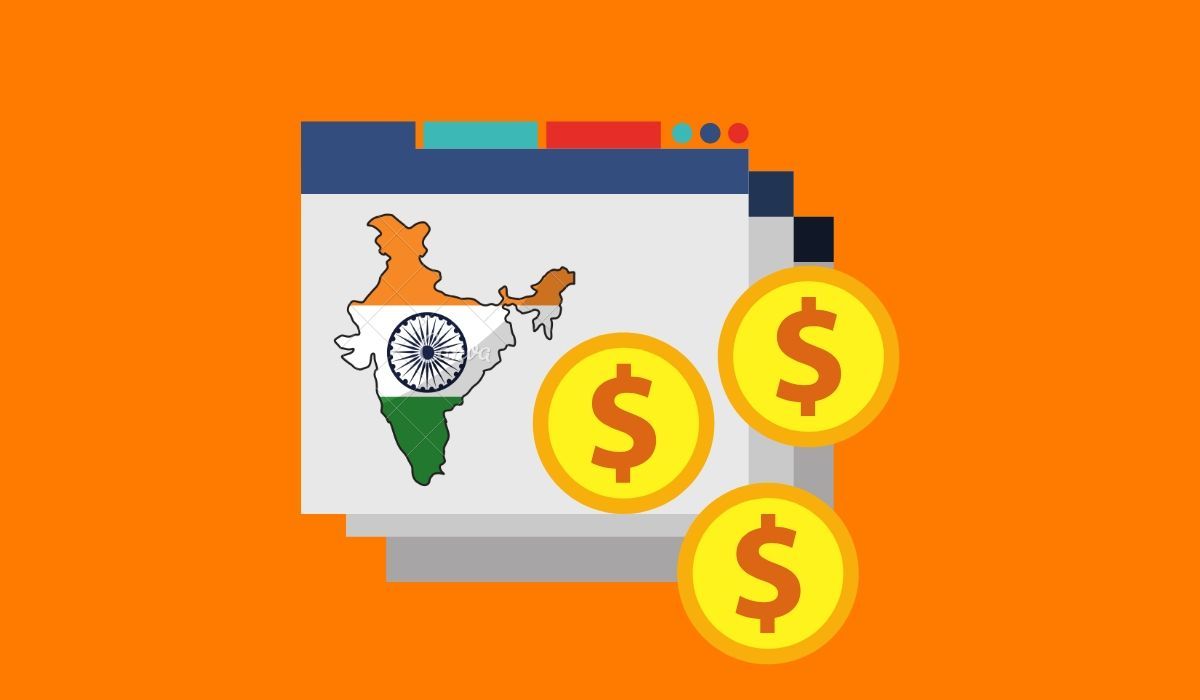
Ola - Growth and Revenue
In 2010, the Ola owners Bhavish and Ankit identified a serious gap in Mumbai. Cabs used to be idle. Cab operators charged high irrespective of the distance to compensate for the time they stayed idle. Poor services and delays were treated as an obvious thing. In 2011, they could make 10 bookings in a day. In October 2015, they booked 700,000 daily rides. They thought of piloting tracking devices in each cab but let go of the idea in January 2012. In April 2012, Ola expanded its operation in Bangalore and Delhi.
Ola has covered an interesting journey from being nothing to becoming a company that provides a livelihood to thousands of people. Today, Ola has become a part of people’s everyday life in many cities.
Ola has already launched its first electric scooters under Ola Electric and was set to step on a new journey involving used cars, which started in October 2021. According to the reports dated July 27, 2021, Ola looked to start its used car retailing business soon in Bengaluru. The ride-hailing giant aimed for a full-stack model where it will buy cars from the driver partners of the company and other people, and sell them to buyers after they are set right, said a close source aware of the future plans requesting anonymity. The new business was called "Ola Cars," which was finally launched on October 7, 2021. Ola Cars helped customers purchase new and old vehicles. Furthermore, it also offered many other services like vehicle purchase, finance and insurance for vehicles, and its registration, and maintenance. This business of Ola was decided by the ride-hailing giant to be reoriented, as far as its June 25, 2022 statement goes.
Ola, which suffered heavily due to the coronavirus pandemic, being a ride-hailing app, has seen quite a progress after the lockdown and other strictures have been lifted. The company confirmed that the recovery it has witnessed from the second wave of Covid was 3X faster than what it has seen while shaking off the blues of the first wave.
India is moving again! Our @olacabs GMV crossed pre-covid levels last week. Recovery from second wave is 3 times faster. Clearly India is up and about! Some interesting trends as #IndiaIsMoving 👇 pic.twitter.com/ERJfBR5s8f — Bhavish Aggarwal (@bhash) September 7, 2021
Ola Co-founder and CEO, Bhavish Aggarwal, has also announced that Ola has seen 10 million users using the app, for the first time ever in FY21. This increase in usage is primarily because most people now are opting to avoid public transport and moving on with personal or shared ways of mobility. Furthermore, Ola Autos, which has seen a 150% rise, are also quite popular.
Bhavish further emphasized that the "Ola rides are safe." He said that over 3 lakh Ola drivers are currently vaccinated and 100% of drivers are likely to get vaccinated soon. Ola is currently onboarding more driver-partners. Besides, the company is also looking to enter new cities and build newer products to serve the growing mobility demands of the people post-Covid. The Bhavish Aggarwal-led company had forayed into the island nation of Europe back in 2018, and the Ola Cabs have been running in London, UK, since February 2020. Ola has more than 25,000 registered drivers on its platform in London.
A warm welcome to the Indian startup expanding its transportation services in foreign countries, now OLA in the UK after Australia and New Zealand markets. Ola is looking at bigger markets. Ola had been working towards this launch for the last year. CEO of Ola, Bhavish Aggarwal said, “It is not just yet another city launch for us. It is a transformative event for all of us at Ola.” In July 2019, Ola was granted a one-year Private Hire Vehicle (PHV) licence from the Transport of London — a body that oversees the cities’ transportation — to operate its services in the city, according to a disclosure made by the department. Ola’s licence is valid until October 3 this year.
Bhavish Aggarwal, the Indian Entrepreneur, and co-founder of OLA Cabs have expressed immense happiness in bringing OLA to the United Kingdom and calls it a ‘momentous moment’ for everyone associated with OLA.
The United Kingdom has one of the world’s most evolved transportation markets. UK worked with black cabs and private hire vehicles (PHV) round-the-clock catering to people. Then, there came OLA, India based online ride-hailing company marching towards the UK, which will be serving as the only on-demand app to offer both Black cab and PHV facilities to people. With the known fact of the UK with its best-regulated taxi services, OLA is about to enter the market. Britain already is embedded with multi-billion dollar ride-sharing giant apps like UBER on its fast pacing on roads.
Ola has obtained the license to operate in South Wales and Greater Manchester as per a press release as it’s the first step as ‘OLA in the UK’. OLA is engaging with policymakers and regulators to expand its network over a period of time. It is currently looking to expand its services throughout the UK. This seems a wise decision entering into the UK market, which faces mobility issues for the people relying on public transport services.
The company has come up with more facilities for commuters as per their convenience and choice. It ensures facilities with 24/7 safety, in-app emergency services, Disclosure and Barring Services(DBS) screened drivers, sharing live location, live tracking, reaching out to emergency contacts if needed, etc. OLA app is user-friendly and is instantaneous in catering to all needs of the people.
OLA in the UK is all set for its second innings globally after launching across seven cities in Australia with its maiden launch. It also has its sketch to launch in Bangladesh and Sri Lanka soon.
Despite the fact that Uber is one of the most sought ride-sharing apps in the UK and its territorial presence in 70+ countries, OLA is enthusiastic and is firm to take a stand globally with 1+ million drivers across various cities. With a huge customer base and the most accessed app in the Indian sub-continent, OLA has an edge over Uber in India. It must have its own strategies to make it successful in the transportation overseas market.
Time for us to wait and watch the Indian-based company establish its market on British grounds.
Ola Answers "Why does my driver cancel my Ola ride?"
Ola founder cum CEO Bhavish Aggarwal has finally replied to "Why does my driver cancel my Ola ride?" by introducing new features to its ride aggregating app on December 21, 2021.
The aforementioned question is the 2nd most popular question that Bhavish gets. Cab cancellation is something that all of the industry's players face but that issue will soon be bettered with the new feature of the Ola app, which will enable the drivers to see an approx drop location and the payment mode before they accept an Ola ride. Bhavish tweeted, "Enabling drivers is key to reducing cancellations."
The cab aggregating giant has always kept the drop location and the approx payment method hidden from the drivers, however, that somehow was not working out, as pointed out by Vineeta Singh, Sugar cosmetics CEO earlier in August 2021. However, the working of the latest feature has already been enthusiastically confirmed by Vineeta. Here goes her latest tweet:
My @Olacabs driver told me that they’ve started seeing approximate destinations before accepting a booking! This is fabulous @bhash ! Building for India 💪🏻 https://t.co/83uyQwTwSE — Vineeta Singh (@vineetasng) December 21, 2021
Ola-Uber Merger Reports Denied
In a recent report by ET, OLA chief Bhavish Aggarwal was reported to have met Uber officials in San Francisco, USA. This was the reason why the talks of the Ola-Uber merger circulated. However, Aggarwal dismissed such talks by saying, “Absolute rubbish. We’re very profitable and growing well." Bhavish also took a dig at the US-based ride-sharing company by mentioning subtly that if any other company wants to exit from India, they can do so wilfully, as per his tweet. The Ola Founder-CEO further claimed that OLA is one of the most profitable ride-hailing companies in the world , and has a strong balance sheet . “ We are the market leader in India and are much bigger than other players ," he added, along with mentioning any merger is completely out of the question. Ola is open to acquisitions though to further cement its position in India, as per reports dated July 30, 2022.
Ola Revenue
In FY21, Ola's operational revenue suffered a decline of over 63%, exceeding Uber's 47% decline, reaching approximately Rs 983.2 crore. Highlighting the contrast, Ola earned Rs 2,662.63 crore in operating revenue for FY20.
However, in FY22, Ola's operational revenue increased by 100%, to Rs 1,970 crore , compared to Rs 983 crore in FY21. The ride-hailing business accounted for 61% of the revenue, increasing by 78.5% to Rs 1,208.6 crore in FY22 from Rs 677 crore in FY21. Financial services added Rs 95.4 crore, while the rest (Rs 666 crore) came from other verticals in FY22. Non-operating income also contributed Rs. 149.53 crore. Overall, Ola's revenue for FY22 stood at approximately Rs 2,120 crore.
Despite the firm's rapid scale expansion, Ola's losses increased by 36.4% to Rs 1,522 crore in FY22 , up from Rs 1,116 crore in FY21.
Ola Expenses
In FY21, Ola reduced marketing, employee benefits, and vehicle running expenses, leading to a decrease in total expenses from Rs 5,058 crore in FY20 to Rs 2,007 crore. However, in FY22, there was a shift in its expenditure pattern. Vehicle running costs and the cost of materials combined amounted to Rs 1,089.7 crore, while employee benefits increased by 26.6% to Rs 552.5 crore. Overall, Ola's expenses in FY22 increased by 67.5% to reach Rs 3,362 crore.

Ola Store Renamed as Ola Dash
Ola started a 15-minute delivery or quick delivery service in several parts of Bengaluru . Via this wing of Ola, the company decided to deliver grocery, pet care, and personal care products. Ola decided to start its ‘ Ola Store ’ initially in a few localities in the city and will have eventually planned to expand its services to other cities in the upcoming months. This new service was availed through the Ola app , which was available for selected customers, who were able to choose from around 2000 items . This made Ola stand as an emerging competitor of brands like Grofers , BigBasket , Swiggy , Dunzo , and more .
Ola Store eventually declared that it would be a 10-minute grocery delivery service and that it had already set up 15 dark stores in Mumbai and Bengaluru , as of November 30, 2021 . Ola aimed to establish around 300 dark stores for the delivery of groceries and conveniences by January 2022. The firm also claimed to deliver around 1000 orders per day. The leading online cab aggregator announced having a fixed budget of around Rs 250 crore for their supermarket delivery business . This was the third time that Ola had attempted to foray into the segment. Ola Store had been renamed as Ola Dash, as per the reports dated January 26, 2022. The new name replaced the old one to infuse the element of speed and faster delivery. The Ola Dash network was estimated to expand its network of dark stores to comprise 500 dark stores, which will be spread across 20 cities and will make it the largest dark store network in India, as of January 28, 2022. However, the Ola Dash business failed to succeed in the long run and was suspended by Ola, as per the reports dated June 25, 2022. Ola Dash had last served 9 cities in total and was spread across 200 dark stores, which offered an assortment of 2500+ SKUs. ‘Store to Door’ was also on and was delivered in 10 minutes.
Some key growth statistics of Ola would reflect that:
- It completes more than 1 bn rides each year.
- The service of Ola is spread over 250 cities.
- Ola has empowered more than 1.5 mn entrepreneurs who are currently with Ola as driver-partners.
- The company has 7000+ employees working with OLA.

Ola - Product And Service
Ola financial services (ofs).
Ola has also introduced Ola money . The products offered under Ola Money are Ola Money credit card , Ola money postpaid , Ola money mobile wallet, and Ola money hospicash . Ola hospicash is a collaboration between Ola and Religare health insurance that allows the policyholders to claim Rs 5000 per day in case of hospitalization. It has further declared that it will invest up to Rs 786.1 crore in this Ola Financial Services subsidiary in December 2021.
Ola operates with transparency. The commission is given to drivers for every sale made. Ola is known to charge far less than many other traditional operators.
Ola Electric
Electric scooters.
Ola launched India's first multimodal electric vehicle project on 26 May 2017 . The project brought together industry experts and the Indian government to pioneer electric vehicles for the public and promote shared mobility in Nagpur. Established as a separate entity, Ola Electric Mobility Pvt. Ltd. also reached unicorn status with a $250 million investment from SoftBank in July 2019.
After exceeding expectations in the pre-booking round, Ola Electric scooters went live for purchase on their website and via the Ola app on September 15, 2021. The company reportedly sold Rs 1100 crores worth of electric scooters in just 2 days.
Electric Cars
Ola has unveiled its plans to launch its first electric car in the next 2-3 years, as per reports dated July 16, 2022. OLA CEO Bhavish Aggarwal teased and announced that his company is gearing up to build the sportiest car that has ever been built in India. Some concept design ideas have been ready already. The first Ola Electric car is to be launched from its new 4W factory that is to be built and would be another factory, separate from Ola's Futurefactory for 2Ws.
In an attempt to challenge Swiggy Genie and Dunzo's courier service, Ola announced the launched of Ola Parcel, an all-electric on-demand delivery service, on October 6, 2023. As a logistics company playing a role akin to Shadowfax, Shiprocket, etc., it will be onboarding itself to ONDC.
Ola - Startup Challenges
The founders Bhavish Aggarwal and Ankit Bhati had to face many challenges in the beginning. They worked long hours and sometimes Ankit, the co-founder of Ola, had to code for 48 hours straight. They have had to drive the customer to their desired locations at times because the drivers did not show up. However, this did not dampen their spirits. The duo worked day and night and people started liking their services.
The twist in their story happened when angel investors Rohit Bansal and Kunal Bahl invested Rs 2 crores in their business. This gave them an initial push and there was no looking back for Ola from there.
As much as Ola wanted to meet the needs of the customers by scaling up to different cities, each city faced its own infrastructural challenge. The app required the use of the 2G network. The team had to design an app that could accommodate network connectivity in smaller towns.
Ola incurs RBI penalty for Ola Financial Services
Ola Financial Services, an OLA subsidiary, has been imposed a penalty of Rs 1.68 crore by the RBI, which claimed that the mobility company failed to comply with the RBI norms in association with the latest changes in the prepaid payment instruments (PPIs) and know your customer (KYC) policies.
RBI mentioned that the entity didn't adhere to "certain provisions of the Master Directions on PPIs dated August 27, 2021, and the Master Direction – Know Your Customer (KYC) Direction, 2016 dated February 25, 2016". After discovering this, the central bank imposed the penalty, exercising the powers vested to the body under Section 30 of the Payment and Settlement Systems Act, 2007 . To justify the huge penalty that it had brought down on Ola, RBI stated that it has earlier showcaused Ola as soon as it discovered that the firm was breaching the KYC norms, but Ola failed to provide a suitable response.
Ola Layoffs
Ola is reportedly looking to curb its expenses, for which, it is looking to lay off somewhere between 400-500 employees, as per reports dated July 6, 2022. This has risen up and would affect close to 1000 Ola employees, as per reports dated July 29, 2022 . Sources and reports have claimed that Ola has already asked its key managers to prepare a list of employees that the company can let go. The ride-hailing giant has already ceased making investments in international markets like the UK, New Zealand, and Australia, and has also shut down its subsidiaries like Ola Dash and Ola Cars, all of which were cash-burn-heavy lines of business. However, with it, the cab aggregating company has also put a stop to the revenue channels that might have benefited it, thereby solely relying on its mobility services. Pulling the plug on these lines of businesses have already
Ola had already started terminating its employees and has also deferred their performance appraisal for this year , as far as the July 9, 2022 reports go . Ola has further announced that it would focus on its EV business, and also increase its hiring for the same. Reports have it that Ola is hiring 4 people for every single person laid off. It would manufacture both electric cars and Li-ion batteries for its electric vehicles.
Unfair Trade Practices and Violation of Consumer Rights
Cab aggregators Ola and Uber got legal notices from the Central Consumer Protection Authority that sent Notices to Ola and Uber for unfair trade practices and the violation of consumer rights, as per reports dated May 20, 2022. The central government of India had previously warned Ola and Uber of strict action if they don't improve their systems and redress the rising complaints. Now, the CCPA has given a 15-day for them to do so.
Ola Resignations
Ola has witnessed numerous resignations lately, which became even more prominent after the increasing fire accidents and amid the preparations for Ola going public sometime soon in 2022. Ola had already seen the resignations of COO Gaurav Porwal, CTO Swayam Saurabh, General Counsel Sandeep Chowdhury, and HR head Rohit Munjal among others, early in 2021. The co-founders of Ola Electric Ankit Jain and Anand Shah had also put down their papers, and now it has been seen that Dinesh Radhakrishnan the CTO of Ola Electric, quit the company on May 8, 2022. Arun Sirdeshmukh, who was the CEO of Ola Cars, also left last week. Already rocked by resignations, Ola's Head of Talent Acquisition, Shikharr Sood also left the company on July 7, 2022. Ola has seen too many top-level exits already and this brings us to the cause of the exits. As per the surveys of the top 10 senior employees of Ola, the culture of "act fast, think later" has been dominant.
Ola ShutDowns
Ola shutdowns are not something new. The cab aggregating giant has failed to pivot time and again, especially in the food delivery segment. The descaling of the food business is now announced for the third time on May 20, 2022, when Ola said that it would sell most of its cloud kitchen equipment at up to 30-50% discounts.
The first of Ola shutdown in the food delivery segments was witnessed when Ola pulled the plug on Ola Cafes in 2016 after a year since it started in 2015 to take on Uber Eats and foray into the food industry. Ola Stores was also shut down in the same year. It next acquired FoodPanda, which was completed in February 2022, but failed with the same so much so that Ola was left operating with only 50 cloud kitchens. The company later suspended Foodpanda's operations completely in May 2019 and laid off around 1500 delivery executives and 40 mid-level staff. Ola eventually tried to pivot again with a handful of flagship food brands like the Khichdi Experiment, Paratha Experiment, The Biryani Experiment, and more. The company had also opted for a multichannel approach, set up 50 cloud kitchens , and had also included mom-and-pop stores in this initiative. Besides, Ola also wanted to acquire Freshmenu to scale its food business, but the deal failed to flesh out.
Ola has decided to pull the plug on its used cars and quick commerce business - Ola Cars and Ola Dash, as per reports dated June 25, 2022. These businesses of Ola are shut down with the sole aim of strengthening its EV and mobility businesses, which the company is planning to only focus on for the time being. Though Ola Cars still has hopes of being reoriented, which is expected to help strengthen the go-to-market strategy of Ola Electric, Ola Dash is to be closed down completely.
Here's briefly looking at the failed ventures of Ola:
Ola has laid off a huge number of employees to date. The last known layoffs were from its quick commerce wing, Ola Dash, from where the company reportedly laid off around 2100 employees in April 2022. Though this is still unconfirmed, it might be the largest layoffs that 2022 has seen so far.

Ola - Partnerships
Apart from the drivers that Ola partners with as clients, the most notable partnership that the cab aggregating giant has witnessed is with Siemens. Ola announced a press release stating ' Ola adopts Siemens’ Digital Enterprise to build India’s most advanced manufacturing facility' on January 20, 2021. Ola has partnered with Siemens to build its upcoming electric vehicle manufacturing facility . This announcement comes when OLA has an MoU with the government of Tamil Nadu to invest around INR 2,400 Cr towards building this facility.
It is expected that the factory will generate around 10,000 jobs , with an initial capacity of 2 million units a year and making it the largest scooter manufacturing facility in the world. This will serve as Ola’s global manufacturing hub catering to customers in India and across Europe, the UK, Latin America, and ANZ (Australia and New Zealand)

This factory is going to be amazing and technologically advanced with 5,000 robots stationed across various functions and will be built on Industry 4.0 principles. Ola will have access to Siemens’ integrated Digital Twin design and manufacturing solutions to digitalize and validate products and production ahead of actual operations. It will have Ola’s proprietary AI Engine and tech stack deeply integrated into each aspect of the manufacturing process. Thereby, providing unprecedented control, automation, and quality to the operations.
Bhavish Aggarwal, Chairman & Group CEO , Ola, said, ‘‘Ola is delighted to partner with Siemens to build the most advanced manufacturing facility in the country. This will be our global hub and will set a benchmark in quality, scale and efficiency, demonstrating India’s capability to build world class cutting edge products. We look forward to bringing this factory online in the coming months and putting our products in the hands of customers.”
Ola’s scooter blends excellent design, sensational performance, and incredible technology into an amazing product. It has already won several prestigious designs and innovation awards including the IHS Markit Innovation award at CES and the German Design Award.
Sunil Mathur, MD & CEO, Siemens India, said , “ Siemens is a global leader in Industry 4.0 and we are proud to contribute to Ola’s vision of creating a factory of the future using our automation and digitalization expertise to ensuring the highest levels of productivity and quality while enabling an agile and flexible production process.”
Ola - Acquisitions and Merger
Ola has acquired 8 organizations in total. The last acquisition of Ola was that of Avail Finance , which is a financial services startup for the blue-collar workforce led by the Ola chief Bhavish Aggarwal's brother, Ankush Aggarwal. The acquisition of Avail Finance was announced on March 24, 2022 , and was finally completed on April 11, 2022, via a share swap deal worth $50 million. The leading cab aggregating giant held a 9% stake in Avail due to its investment in the startup in 2019 before it acquired the company.
GeoSpoc was the previous company that Ola acquired on October 5, 2021. It was the company's first acquisition in a period of over 2 years after it acquired Pikup.ai on August 13, 2019. ANI Technologies, the parent of the ride-hailing major Ola and Ola Electric, completed its acquisition of Foodpanda from Delivery Hero, the Germany-based parent of Foodpanda.
The acquisition of Foodpanda was first announced by Ola in December 2017 for around $200 mn to reinforce its food delivery service. Fast forward to February 5, 2022, the food delivery giant held an extraordinary general meeting where the shareholders of Ola decided to issue 3,793 Series J2 CCPS to Delivery Hero, for Rs 8.5 crore. Mentioning that to acquire 100% of the shares in Foodpanda , the company stated that it will be finally issuing 3,793 Series J2 CCPS to Delivery Hero instead of cash consideration, which will allow the company to acquire 77,10,564 equity shares, which were held by Delivery Hero in Foodpanda, as per the news dated February 24, 2022.
Founded by Ralf Wenzel, Benjamin Bauer and Felix Plog in 2012 in Germany, Foodpanda was a successful business at that time in India, however, due to piling expenses, miscommunication, technical flaws, lack of ownership, lack of a foolproof business, and revenue model, the startup struggled much in India before it finally got acquired by Ola. Foodpanda reportedly pulled in 30,000-35,000 orders per day when it was at its peak of India operations. Furthermore, it launched "The Crave Party" in the last week of August 2018, which rained a range of discounts for the customers, and multiplied the order volumes of the app by 10X in the same year.

Currently, the Foodpanda app lies suspended after the Ola acquisition of FoodPanda.
Here's the list of the prominent Ola acquisitions to check out:
Ola had acquired the Pune-based geospatial service provider, GeoSpoc in order to improve their location and geospatial technologies with an undisclosed amount . Talking about the acquisition, CEO and Co-Founder, Bhavish Aggarwal mentioned the need for "better, newer maps and geospatial services" for the "new mobility" and to build the future of location services .
The geospatial sector in India has witnessed quite a growth lately, the market of which, in India, is currently valued at Rs 15,000 crores, and is expected to hit Rs 1 Lakh crores by 2029-2030. The company completes its acquisition of GeoSpoc in full for Rs 26 crore, as per the reports dated December 8, 2021.
Ola had already executed an employee stock ownership plan (ESOP), which was worth around $10.5 million (Rs 78.6 crores) for its three former employees and one current executive. Now, the company has further decided to provide ESOP encashment facilities for the former chief executive officer of Ola Foods, Pranay Jivrajka; former chief operating officer of Ola, Pallav Singh; Nimish Joshi, former Vice President, and its current chief product officer, Suvonil Chatterjee.
Among all of them, Jivrajka has emerged as the biggest beneficiary of the ESOP encashment program of Ola with Rs 38.17 crore, who is followed by Pallav Singh, Suvonil Chatterjee, and Nimish Joshi, who possess Rs 24.8 crore, Rs 8.5 crore, and Rs 7.08 crore respectively. Ola declared this development soon after it announced the expansion of its ESOP pool to Rs 3,000 crore. Furthermore, the company also noted that it will have some fresh stocks, worth Rs 400 crore allocated for the employees in the run-up to its IPO. Ola currently boasts of having one of the largest ESOP pools among the late-stage startups of India, which also includes companies like Paytm, OYO, and BYJU'S.

Ola - Competitors
Ola directly competes with Uber , the world’s most well-financed startup having raised more than $24 billion in equity and debt on a recent valuation of $82 billion. Other players in India include:
- Meru Cabs Company Pvt. Ltd., which owns Meru Cabs
- Carzonrent (India) Pvt. Ltd., which owns Carzonrent
- Zoomcar India Private. Ltd., which owns Zoomcar.
- In the bike taxi segment, Rapido is slowly capturing Ola's market share.
- InDriver, the international ride-hailing app is the hot favorite today in India, which was founded in Russia and is headquartered in Mountain View, California, US.
Ola - Future Plans
Ola was initially looking to go public in the first quarter of 2022, and speculation rose that it would likely file its DRHP (Draft Red Herring Prospectus) in the December quarter of the previous year. However, the present scenario suggests that Ola is planning an initial public offering (IPO) in late 2023.
The plans of Ola with its subsidiary, Ola Electric, seem big, as the EV-manufacturing wing of Ola has already started achieving some major feats. Ola is currently focusing more on its cab service and its operations.
Is Ola a Chinese Company?
Ola is an Indian Company but is funded by Chinese investors like Tencent Holdings, Steadview Capital, Sailing Capital, Eternal Yield International Ltd, and China-Eurasian Economic Co-operation Fund with an estimated investment of $500 million.
Who are the Ola shareholders?
Ola's major shareholders/investors include SoftBank Group (Japanese), Tiger Global (US-based), Tencent (Chinese Venture Capital), Matrix Partners (US-based), and DST Global (Russia).
Which country is Ola from?
Ola Cabs was founded in Mumbai, India .
Who is the founder of Ola Cabs?
What is the full form of ola.
There is no full form as such. The name is derived from the Spanish word 'Hola' which translates to ‘hello’.
How to become a partner of Ola?
You can easily be a partner of Ola by simply going to www.partners.olacabs.com. There you will find 3 options to become an Ola Partner. You can be an Ola Partner:
- If you already have a car and you want to attach that car with Ola
- If you know driving, but lack a car
- If you have a fleet and you want to attach the same with Ola
When was OLA Electric founded?
Ola Electric was founded in 2017, as a new subsidiary of the Ola company that caters to the new-age, sensible users of electric vehicles.
What is Ola Dash?
Ola Dash was an Ola service that the cab aggregating giant founded in 2015, to provide quick commerce service. However, the service was suspended as per the Ola statements dated June 25, 2022.
Must have tools for startups - Recommended by StartupTalky
- Manage your business smoothly- Google Workspace
National Technology Day: Experts Share Insights on Technology Trends and Innovations
National Technology Day is celebrated on May 11th as an occasion to honor Indian scientists, engineers, and technologists. It's a time to recognise the endless possibilities technology offers and ensure responsible innovation. Nowadays, with AI being the talk of the town, or better to say, the talk of the world,
AI Squared Acquires Multiwoven to Accelerate Delivery of Data and AI Insights into Business Applications
Acquisition of leading open-source reverse ETL (rETL) platform comes on the heels of robust Series A funding round. Mumbai, May 10, 2024: AI Squared , a leading technology provider for integrating information into web-based business applications, announces its acquisition of the world’s number one open-source Reverse ETL (rETL) company, Multiwoven.
Sony Marketing Strategy: An In-depth Analysis of its 7Ps Approach
The Sony Group Corporation is a Japanese global enterprise with its head office in Minato, Tokyo. As a significant player in the technology industry, it is among the biggest producers of consumer and business electronics worldwide and the biggest console maker and publisher of video games. Sony Entertainment Inc., is
Harnessing the Sky: How Atmospheric Water Generation Can Combat Global Water Scarcity
The article has been contributed by Mr. Navkaran Singh Bagga, CEO & Founder, Akvo. In today’s world, water scarcity affects over two billion people globally, posing a severe threat to both human health and economic stability. Innovative solutions are imperative to address this crisis. Akvo's atmospheric water generator (AWG) technology

- App Development
Ola’s Winning Revenue Model: How They Dominate the Ride-Hailing Industry

In the ever-evolving landscape of the transportation industry, Ola has emerged as a pioneering force, reshaping the way we commute and challenging the norms of traditional taxi services. With a presence across many countries. Ola has become a household name, transforming the daily lives of millions of people.
But have you ever wondered how Ola’s business works? How does this ride-hailing giant provide convenient, affordable, and reliable transportation while maintaining profitability? In this blog, we will give you information about the intricate mechanisms of Ola’s business and revenue model. As an app and web development company , we give you a thorough understanding of the Ola cab business model and Ola income model. You will gain a clear understanding of what you may incorporate into your upcoming rental app or carpooling app business from this.
What is Ola?
Ola is not just a ride-hailing service but a transformative force in transportation. Established in 2011, this homegrown Indian company has rapidly become a household name, offering efficient and convenient transportation solutions to millions.
What sets Ola apart is its unique two-sided network model, creating a seamless bridge between passengers needing on-demand rides and a fleet of dedicated driver-partners. This is made possible through a user-friendly mobile app that has changed how people move from one place to another.
Ola is known for its dynamic pricing model, which adjusts fare based on demand and supply.
Operating in over 250+ cities across India, Australia, New Zealand, and the UK, Ola is a lifeline for daily commuters, tourists, and everyone. The numbers speak for themselves, with a whopping 125 million registered users on the platform.
You can get in touch with Infigic , a reputable mobile app development company , if you have any questions about setting up an online auto rental and carpooling app. We have a highly skilled team of developers who will create the best software for cab booking in order to maximize return on investment.
Ola Electric
Ola Electric Mobility, driven by a resolute commitment to transforming the automotive landscape and championing environmental sustainability, made a significant mark in August 2021 when they introduced their inaugural electric vehicle. Their relentless pursuit of innovation took another leap forward when the company unveiled their remarkable S1 Series electric scooters at the prestigious NADA EV Expo in Nepal on 22nd September, 2022.
This audacious stride towards global expansion showcases Ola Electric’s determination and underscores India’s position as a burgeoning hub for the electric vehicle revolution. The Ola electric vehicles are now open for reservations, and the company has proudly reported an astounding sales figure of nearly 150,000 units in 2022 alone.
What is Ola’s Business Model?
- Two-Sided Network: A two-sided network is at the heart of Ola’s business model. This ingenious approach connects riders seeking convenient transportation with a vast network of driver partners via a user-friendly mobile app. This creates a dynamic ecosystem where riders and drivers benefit from each other’s presence, a win-win situation.
- Marketplace Platform: Ola operates as a marketplace platform, bringing together the supply (drivers and vehicles) and demand (riders). The app acts as a seamless mediator, allowing riders to book a ride with just a few taps and drivers to find passengers efficiently.
- Dynamic Pricing: Ola is known for its dynamic pricing model, which adjusts fares based on demand and supply. During peak hours or high demand, prices may surge, incentivizing more drivers to come online and meet the increased demand, thereby ensuring quick and reliable service.
- Diverse Services: Ola offers various services, from economy options to premium vehicles and even auto-rickshaws, catering to various customer preferences and budgets. This diversification allows Ola to capture a broader market share.
- Geographical Expansion: Ola’s ambitious geographical expansion strategy has taken it far beyond Indian borders, with services in Australia, New Zealand, and the United Kingdom. This enhances Ola’s market reach and opens doors to diverse markets and customer bases.
- Additional Features: Beyond simple point-to-point rides, Ola has introduced features like Ola Share (carpooling), Ola Bike (bike taxis), and Ola Money (digital wallet), offering a comprehensive suite of services and additional revenue streams.
- Tech Integration: Ola’s technology for operations, including route optimization, real-time tracking, and a robust feedback system. This not only enhances the user experience but also ensures operational efficiency.
- Safety Measures: Ola strongly emphasizes safety, with features like in-app emergency buttons and driver background checks, fostering trust and ensuring a secure experience for riders.
How Does Ola Make Money?
- Trip commission
- Base Fare: This is the initial, flat fee that you’re charged at the beginning of your ride.
- Distance-Based Fare: Ola calculates your fare based on the distance traveled per kilometre after the initial fixed fare. The rate can vary depending on the car type and your location.
- Time-Based Fare: Your fare includes a charge for the total time of your trip, from pickup to drop-off. You’re billed based on the minutes spent in the vehicle.
- Wait Time Fare: If your driver has to wait for you, a wait time fare may be added to your fare.
- Peak Pricing: During times of high demand, Ola may increase the per-kilometer rates. These rates can also vary based on the type of car you choose, influencing the overall fare.
- Advance Booking Fees: When you book a ride for future use, Ola charges an advance booking fee.
- Access Fees: This fee applies to auto rides.
- Convenience Fee: If you’re enjoying in-cab entertainment during your ride, Ola may apply a convenience fee.
- Airport Fees: When you’re picked up or dropped off at an airport, surcharge fees may be added to your fare.
- Tool and Parking Fees: If applicable, fees related to tools and parking may be included in your fare.
- Cancellation Fee: In certain situations, if you cancel your ride, a cancellation fee may apply. The exact fee varies depending on the ride and location.
- Service Tax: Ola may charge a service tax on the entire trip fare.
- Ola Money: Ola has introduced its virtual wallet service, Ola Money, which allows users to make payments for cab rides and at various vendor touch points. This service contributes to Ola’s overall revenue.
- In-Cab Promotions and Advertisement Commissions: Ola leverages in-cab promotions and advertisements to boost revenue. Advertisers pay commissions for playing live-streaming ads and distributing promotional materials such as brochures and pamphlets to commuters.
- Cab Leasing Program: Ola’s cab leasing program caters to driver partners by purchasing and leasing vehicles. Drivers pay an initial fee, a refundable security deposit, and a fixed daily fee for vehicle use, with the revenue generated from the trip to the driver. This program combines both fixed fees and trip-based commissions.
- Ola Credit Card: Ola offers its “Ola Money SBI Card” credit card in partnership with SBI and Visa. This card provides its consumers various benefits and rewards, contributing to Ola’s revenue.
- Corporate Accounts: Ola engages in business meetings with corporate leaders, promoting using Ola cabs for corporate travel. With reduced rates for these corporate partnerships, Ola gains higher sales volume.
- Delivery Service – FoodPanda: Following its acquisition of FoodPanda, Ola ventured into the online food delivery segment. This diversification is expected to increase profits and strengthen Ola’s position in the food delivery market.
- Ola Prime Play: In collaboration with Microsoft, Sony Liv, Apple Music, Audio Compass, and others, Ola offers in-cab personalized entertainment through Ola Prime Play. Passengers are charged a convenience fee for this service, providing an additional source of revenue for the company.
Ola’s Value Proposition
Ola’s on-demand transportation service promises discerning customers a seamless and reliable experience. With just a few taps, the Ola app offers a range of well-priced and flexible ride options, setting a new standard for quality and trust.
The ride is designed for ultimate comfort, featuring in-ride entertainment and WiFi. Ola’s stringent driver selection ensures only the most dependable and experienced professionals behind the wheel.
Regarding customer service, Ola shines with minimal wait times, multiple-stop flexibility, and various payment options, including cashless choices, catering to diverse traveler preferences.
Ola isn’t just about the riders; it’s equally committed to empowering its drivers. With the Ola platform, drivers can set their hours and maximize their earnings by providing rides. Additional support, like a 24-hour helpline and leased cars, is also readily available.
In a nutshell, Ola’s business model is all about delivering unparalleled value to both riders and drivers, setting new benchmarks in the transportation industry.
What are the Benefits of Using Ola?
- Convenience : Ola’s user-friendly app makes booking a ride effortlessly. With just a few taps on your smartphone, you can have a ride at your doorstep.
- Affordability : Ola offers a variety of ride options, including budget-friendly choices, ensuring there’s something for everyone.
- Quality Service : Ola maintains high standards for its drivers, ensuring they are experienced and reliable and their vehicles are well-maintained.
- Safety : Ola takes passenger safety seriously, with features like in-app emergency buttons and driver background checks to ensure a secure journey.
- Transparency : Fare estimates, upfront pricing, and multiple payment options, including cashless transactions, provide transparency and flexibility.
- In-Ride Amenities : Many Ola rides offer in-cab entertainment, WiFi, and other amenities, making your journey comfortable and enjoyable.
- Multiple Ride Options : Ola provides a variety of ride categories, from economical options to premium vehicles, accommodating diverse preferences and budgets.
- Flexible Stops : Ola allows you to make multiple stops during your ride, providing flexibility for your travel needs.
- Global Reach : Ola’s services extend beyond India to countries like Australia, New Zealand, and the United Kingdom, ensuring you can use Ola in various locations.
- Driver Empowerment : Ola’s platform empowers drivers to set their hours and increase their earnings potential, making it a mutually beneficial arrangement.
- Customer Support : Ola offers a 24-hour helpline for customer support, ensuring assistance is readily available.
- Cashless Options : Ola’s digital wallet and cashless payment methods provide convenience and security.

Key Resources for Ola
- Fleet of Vehicles: Ola’s fleet of cars is the core resource it offers drivers. This extensive fleet includes various vehicle options, thanks to collaborations with automakers.
- Driver-Partners: The drivers who pick up and transport passengers are vital resources for Ola. The company employs a substantial number of drivers.
- Technology: Ola relies on technology to deliver its services. Its mobile app allows customers to book and pay for rides with features like GPS, mapping, real-time tracking, and driver-passenger communication.
- Data: Ola leverages user data to customize services and marketing campaigns based on passenger preferences and ride history.
- Intellectual Property: Ola’s proprietary technology and trademarks provide a competitive advantage.
- Financial Resources: Ola has access to significant capital from investors and operational profits, enabling it to expand, invest in technology, and potentially acquire competitors.
- Physical Assets: Ola possesses various physical assets, including office buildings, warehouses, and call centers, facilitating its operations.
- Human Resources: Ola employs a substantial workforce responsible for diverse functions, such as marketing, operations, engineering, and customer service, ensuring the smooth functioning of the business.
Ola’s Key Marketing and Branding Initiatives
- App Enhancement : Ola continually updates its mobile app to provide an improved user experience for booking and paying for rides.
- Driver Recruitment and Training : Ola recruits and trains new driver-partners to ensure they understand app usage and deliver excellent customer service.
- Fleet Management : Ola collaborates with vehicle manufacturers to maintain a fleet of vehicles for its drivers.
- Marketing and Branding : Ola engages in marketing and promotional activities to attract and retain customers, including advertising campaigns and partnerships.
- Partner Management : Ola manages partnerships with various entities, from auto manufacturers to financial institutions, ensuring mutually beneficial relationships.
- Data Analysis : Ola analyzes customer data to enhance services and marketing efforts.
- Customer Support : Ola provides customer support through helplines, email, and social media.
- Regulatory Compliance : Ola ensures compliance with transportation and taxi service regulations, including obtaining necessary licenses.
- Research and Development : Ola invests in R&D to improve technology, develop new app features, and explore innovative business models.
Ola’s Revenue Streams
- Trip Commissions: Ola’s primary source of revenue comes from the commissions it charges on every trip facilitated through its platform. These commissions are based on factors like location, car type, and additional services. Ola collects fees such as base fare, distance per km fare, ride time fare, wait time fare, and peak pricing, generating income from each ride.
- Advance Booking Fees: Ola charges a booking fee for rides scheduled for later use, providing an additional revenue stream.
- Access Fees: A fee is applied for auto rides, contributing to Ola’s revenue.
- Convenience Fees: Ola offers in-cab entertainment during rides, and a convenience fee is charged for this feature, adding to the company’s earnings.
- Airport Fees: For airport pickups and drop-offs, Ola levies surcharge fees, generating additional income.
- Cancellation Fees: In certain situations, when passengers cancel their rides, Ola imposes a cancellation fee, contributing to its revenue.
- Ola Money: Ola has its digital wallet service, Ola Money, which enables ride payments at various vendor touchpoints. The usage of Ola Money generates revenue.
- In-Cab Promotions and Advertisement Commissions: Ola earns commissions from advertisers who promote their products and services through in-cab promotions, including live-streaming ads and distribution of promotional materials.
- Corporate Accounts: Ola collaborates with businesses and offers reduced rates for corporate travel, enhancing its revenue through higher sales volume.
- Delivery Service – FoodPanda: Following the acquisition of FoodPanda, Ola entered the online food delivery segment. This diversification is expected to boost Ola’s profits and revenue in the food delivery market.
- Ola Prime Play: Ola partners with various entertainment providers and charges passengers for in-cab personalized entertainment, further adding to its revenue.
- Leasing Program: Ola operates a cab leasing program for its drivers, charging an initial fee, a security deposit, and a daily fee. The revenue from these fees and commissions creates a consistent income stream.
Who is Ola’s Main Competitor?
Uber: Uber is one of Ola’s primary rivals globally. Both companies offer similar ride-hailing services and have engaged in fierce competition in the Indian market.
Parting Thoughts
Ola’s commitment to compliance with regulations, investment in research and development, and expansion into adjacent markets like food delivery demonstrate its agility and forward-thinking approach.
By effectively managing key resources like a diverse fleet of vehicles, skilled driver-partners, cutting-edge technology, user data, intellectual property, financial assets, and a dedicated workforce, Ola has solidified its position as a dominant player in the industry.
The competition may be fierce, with rivals like Uber and regional competitors. Still, Ola’s commitment to delivering quality service, an ever-expanding suite of offerings, and a global outlook have propelled it to the forefront of the ride-hailing landscape. As Ola continues to grow and adapt to the evolving needs of passengers and drivers alike, it remains a driving force in the world of transportation, setting new standards for convenience, reliability, and innovation.
Q-1 How Much Commission Does Ola Take?
Answer- Ola’s commission structure can vary based on location, vehicle type, and driver incentives. However, as of my last knowledge update in September 2023, Ola typically charges a commission of around 20% on the total fare generated by a driver. This means the driver keeps 80% of the fare, and the remaining percentage goes to Ola as a commission fee.
Q-2 When Ola Started in India?
Answer- Ola, the ride-sharing and transportation network company, started operations in India on December 3rd, 2010. Since then, it has become one of the leading ride-hailing platforms in the country, offering a wide range of services, including Ola Cabs, Ola Auto, Ola Bike, and Ola Share, to millions of users across various cities in India.
Q-3 What is the business model of Ola Electric?
Answer- According to our exclusive taxonomy, Ola Electric operates as an automaker business model. This entails the development and production of electric vehicles, encompassing cars, two-wheelers, commercial vehicles, and personal mobility equipment.
6 Best React JS eCommerce Sites
Blue apron business model | blue apron revenue, leave your thought here cancel reply.
Your email address will not be published. Required fields are marked *
Save my name, email, and website in this browser for the next time I comment.
- Business Ideas
- Technology Stacks
- Design Inspirations
- Website Development
- Magento Development
- eCommerce Development
- Insurtech App & Website Development
Get In Touch

Schedule Meeting
Talk to us and get your project moving.

Canada Office

Infigic, a dynamic and innovative eCommerce & App Development agency nestled in the picturesque city of Fredericton, New Brunswick
Partner With Us
Hire developers.
- Hire Magento Developer
- Hire Laravel Developer
- Hire PHP Developer
- Hire Reactjs Developer
Web Development
- Web Development Services
Magento Development Services
- Laravel Development Services
- Odoo Development Services
Wordpress Development Services
- PHP Development Services
- React JS Development Services

WEB DEVELOPMENT
- Magento eCommerce Development
- WordPress Development Services
- Ruby on Rails Development
ECOMMERCE DEVELOPMENT
- E-commerce Website Development Services
MOBILE APP DEVELOPMENT
- Mobile App Development
- Augmented Reality App Development Services
- React Native App Development Services
- Android App Development
- Mobile Commerce App Development
DIGITAL MARKETING
- SEO Services
- Graphic Design Services
- Case Studies

After Effects CC
- Principle For Mac
OLA UX Case Study

After Effects
Creative Fields

Interaction Design

- interaction
- user interface
- UserInterface
- uxcasestudy
No use is allowed without explicit permission from owner

Ola vs Uber Complete case study, comparison and Business Model
- Post author: Tanya Mishra
- Post published: April 29, 2023
- Post category: Uncategorized
- Post comments: 0 Comments
The rise of ride-hailing/ taxi services has entirely transformed the transportation industry. Booking a ride on your smartphone and having it come pick you up from your doorstep is a common occurrence these days. The convenience of ride-hailing services has led to a meteoric rise in their usage, especially in crowded urban regions. Statista projects that the worldwide ride-hailing market is likely to expand by US$ 126.5 billion by 2025.
While their services are comparable, there are significant distinctions between the two firms that set them apart. This blog will compare and contrast Ola and Uber, looking at their respective business plans, marketing approaches, and brand identities in great detail. We’ll also look at other essential criterias, such as market share, revenue, and growth rate, to determine which firm is more successful in India.
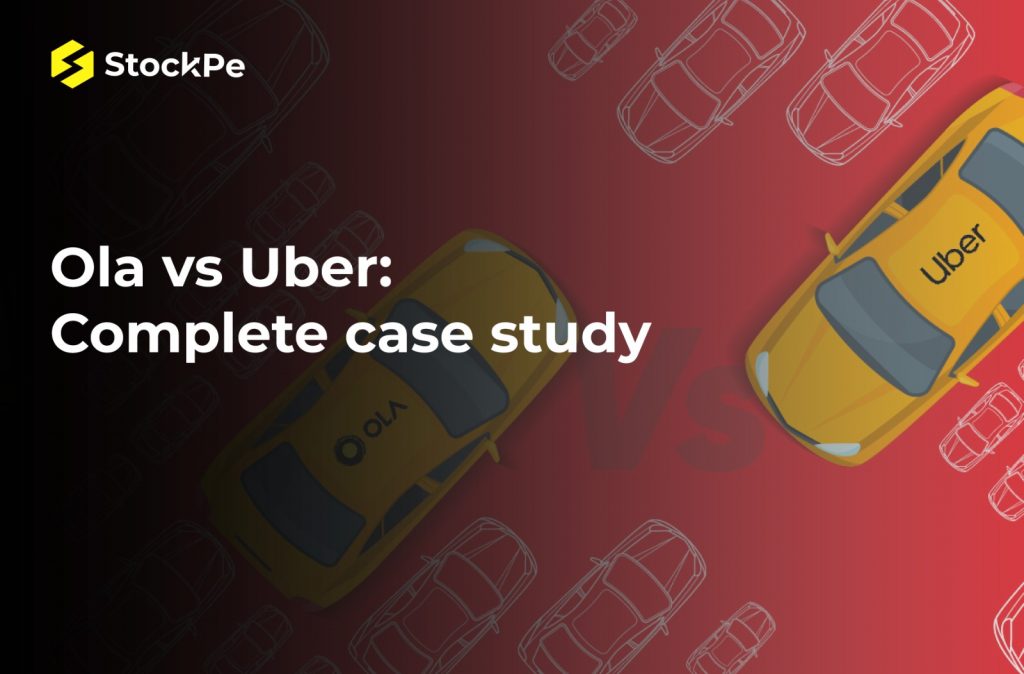
Ola vs Uber Comparision
When it comes to comparing Ola vs Uber, there are numerous aspects to contemplate, including service excellence, pricing, security, and accessibility. Let’s take a meticulous glance at the Uber and Ola case study with these distinctive factors.
Market Share and User Base:
In terms of market share, Ola has a significant lead over Uber in India. According to a report , Ola had a 59% market share in India’s ride-hailing market in 2022, while Uber had a 41% market share. However, both companies have faced stiff competition from other ride-hailing services such as Rapido and Meru Cabs.
As of the current year 2022, Ola has amassed a whopping 100+ million registered users in India, whereas Uber boasts approximately 93+ million users. Nevertheless, it’s noteworthy to mention that the count of monthly active users for both corporations is considerably lesser.
Ola and Uber Marketing Strategy Case Study:
Both Uber and Ola in India have extensively invested in advertising and branding to establish themselves as the preeminent ride-hailing service. Ola has been widely recognized for its assertive marketing initiatives, encompassing TV commercials, billboards, and social media promotions. On the flip side, Uber has concentrated further on crafting a polished and refined brand persona. Uber has recently launched a plethora of innovative brand campaigns in India, such as “Uber Zindagi” and “Khudki Gaadi”, to entice a larger customer base.
Business Model:
Both Ola Auto vs Uber Auto have analogous business models, which entail linking commuters with chauffeurs through a mobile application. Nevertheless, there are certain disparities in their methodology. Ola boasts of a multifaceted business model, encompassing many services such as Ola Auto and Ola Bike. Ola additionally provides a plethora of payment alternatives, encompassing cash, debit cards, credit cards, and mobile wallets. Conversely, Uber concentrates on automobile journeys and has freshly introduced amenities like Uber Auto and Uber Moto in certain urban areas.
One of the paramount aspects that patrons contemplate when selecting a transportation service is the cost. Uber and Ola in India provide competitive rates and have introduced numerous exclusive promotions to entice additional patrons. Nevertheless, when it comes to overall cost-effectiveness, Ola is reputed to be marginally more economical than Uber. Additionally, Ola presents a plethora of alternatives for ride-sharing, which can substantially diminish the expenses of commuting.
Security is a significant apprehension for both Ola and Uber patrons. Both corporations have implemented a plethora of safety measures, including cutting-edge GPS tracking, in-app emergency buttons, and rigorous driver verification protocols. Ola has recently introduced a novel feature named “Guardian” that enables patrons to share their ride particulars with their emergency associates. Similarly, Uber has recently launched a novel feature dubbed “Ride Pass” that enables patrons to share their ride details with reliable acquaintances instantaneously.
Customer Support:
Regarding customer assistance, both Ola Cab vs Uber India possesses specialized customer support squads that are accessible round the clock to handle customer inquiries and grievances. Nevertheless, Ola is reputed to provide exceptional customer assistance compared to Uber. Ola business boasts a committed customer assistance squad that can be contacted through various channels like phone, email, and social media platforms. On the contrary, Uber’s exceptional customer assistance squad can solely be accessed via the in-app assistance hub or electronic mail.
Brand Image: Ola and Uber branding case study
In terms of brand perception, both Ola Cab vs Uber India enjoys robust brand recognition in India. Nevertheless, Ola is commonly regarded as a quintessentially Indian brand, whereas Uber is often viewed as a globally recognized brand. This is primarily attributable to the fact that Ola has been functioning in India for a more extended period and has a more indigenous approach to its amenities. On the contrary, Uber has been renowned for its exceedingly comprehensive perspective and has triumphantly broadened its amenities to numerous nations across the globe.
Service Quality:
Both Ola and Uber provide comparable services, such as ride-sharing, car rentals, and bike-sharing. Nevertheless, the caliber of assistance may fluctuate contingent on aspects like the chauffeur’s proficiency, the state of the automobile, and the accessibility of conveniences like Wi-Fi and mobile chargers.
Ola and Uber utilize dynamic pricing, which implies that tariffs may fluctuate based on factors such as demand, traffic, and the hour of the day. Nevertheless, Ola is reputed for providing comparatively economical fares than Uber in several cities, thereby assisting the enterprise in acquiring a greater market share in India.market share in India.
Performance – Ola vs Uber
In terms of efficiency, both Uber Cabs vs Ola Cabs have achieved remarkable success in their markets. Ola enjoys a substantial market share in India, whereas Uber reigns supreme in the US and numerous other nations. As per a recent study, Uber amassed over 1 billion global downloads in 2022, whereas Ola garnered more than 550 million+ million downloads. Furthermore, Ola exhibited a superior expansion rate in comparison to Uber, with a year-on-year surge of 42% as opposed to Uber’s 21%.
Business Model Analysis – Ola vs Uber case study
Ola’s distinctive business strategy revolves around providing cost-effective rides to its clients. The corporation has accomplished this by utilizing agile pricing and offering motivation to drivers. Ola business model has additionally broadened its offerings to encompass various transportation alternatives like Ola Auto, Ola Bike, and Ola Rentals, accommodating diverse client requirements. Ola has recently launched Ola Share, an innovative carpooling service that enables passengers to share their rides with fellow commuters heading in the same direction. This service has garnered immense popularity in numerous cities.
On the contrary, Uber business model is also concentrated on providing cost-effective rides to patrons. The corporation has accomplished this feat by implementing surge pricing during high-demand periods and offering diverse incentives to drivers. Uber has additionally broadened its range of services to incorporate UberGo, UberX, UberPOOL, and UberBLACK, accommodating various customer requirements. Uber has recently launched UberEATS, an innovative food delivery platform that brings delicious meals from nearby eateries straight to hungry customers.
Both corporations function on a comparable model, where they receive a percentage of the fare paid by the passenger as their remuneration. Nevertheless, there are some notable disparities in their methodology towards their drivers. Ola has an exceedingly driver-friendly policy, providing them with numerous incentives and benefits, such as comprehensive health insurance and substantial financial assistance. Uber, conversely, has faced censure for its handling of drivers, who are deemed as autonomous contractors and not staff members.
Regarding financing, both Ola and Uber have obtained significant investments from diverse investors. Uber has received financing from SoftBank, Toyota, and the Public Investment Fund of Saudi Arabia, while Ola has just garnered funds from SoftBank, Tencent, and Sequoia Capital, among other important investors.
Q1. Ola vs Uber which is cheap?
Typically, Ola is marginally more economical than Uber in India, particularly for communal journeys and brief distances.
Q2. Ola vs Uber which is better?
Each Ola and Uber possess their unique strengths and weaknesses, and the ultimate decision relies on personal preferences and priorities.
Q3. How exactly does Uber contend with Ola in the Indian market?
Uber fiercely competes with Ola in India by offering competitive pricing, exciting promotions, and expanding its reach to new cities and services.
Q4. How does the fare comparison differ between Ola and Uber?
The tariffs for Ola and Uber differ based on variables such as distance, time of day, and demand.
Q5. What is the distinctive business strategy of Ola vs Uber?
Ola and Uber generate substantial revenue by taking a nominal commission on each ride and have remarkably expanded into new services like scrumptious food delivery and rental services.
Final Words
In conclusion, both Ola and Uber have remarkably transformed India’s ride-hailing sector and have revolutionized how individuals travel in metropolitan regions. Although both corporations possess their advantages and drawbacks, they have successfully acquired a substantial portion of the market by introducing inventive solutions and maintaining competitive pricing.
In the end, the decision between Ola and Uber boils down to individual inclination and specific necessities such as cost, accessibility, and client assistance. Therefore, it is crucial to meticulously contemplate all these aspects before selecting a ride-hailing platform in India.
You Might Also Like
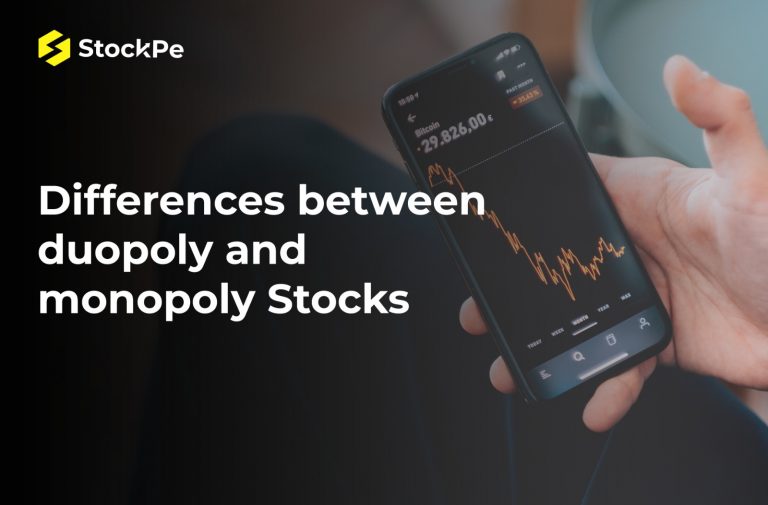
Differences Between Duopoly and Monopoly Stocks – Know Your Basics

How to Invest in Nifty50?

Top Renewable Energy Stocks to buy in India
Leave a reply cancel reply.
Save my name, email, and website in this browser for the next time I comment.

Looking to try stock market fantasy game?
Play on StockPe now to win big rewards with secured withdrawals.
- E-Commerce Mobile App
- Education Mobile App
- Food Delivery Mobile App
- Taxi Booking App
- Chatting Mobile App
- Dating Mobile App
- Grocery Mobile App
- Flight Booking App
- Salon Mobile App
- Pharmacy Mobile App
- Healthcare App Solutions
- Classified Mobile App
- Doctors Appointment App
- E-wallet App Development
- Readymade eCommcerce Mobile App Solution
- iPhone App Development
- Android App Development
- Kotlin App Development
- React Native App Development
- Game Development Services
- Flutter App Development
- PHP Development
- WordPress Development
- ReactJs Development
- Laravel Development
- CakePHP Development
- AngularJS Development
- Dot Net Web Development
- NodeJS Development
- CSS3 Development
- JavaScript Development
- Html5 Development
- Hosting Services
- SEO Services
- Google PPC Ads
- Content Marketing
- Shopify Design & Development
- Woocommerce Web Development
- Opencart Development
- Big-commerce
- UI/UX Design
- Machine Learning
- Generative AI
- Hire iPhone App Developers
- Hire Android Developers
- Hire React Native Developers
- Hire Flutter App Developer
- Hire WordPress Developers
- Hire PHP Developers
- Hire Laravel Developers
- Hire CakePHP Developers
- Hire Magento Developers
- Hire Shopify Developers
- Hire Angularjs Developers
- Hire Nodejs Developers
- Hire Java Developers
- Testimonials
- BOOK A CONSULTATION
Interesting Facts And Features of OLA

by Bharat Arora · Updated on September 2, 2021

Tables of Content
History of ola cab, some less known facts about ola, business model of ola: how does ola work, revenue model: how does ola make money, marketing strategy of ola, features of different apps, over to you.
Do you ever wonder how about what is the history of Ola?
And what is the success story of Ola?
Because we do!!!
And we also have the answer.
We have created this blog to answer all of your questions!
In this blog, you will get to know some interesting facts, business and revenue models, marketing strategies, and OLA app features.
So if you want to know how you can create a successful app like OLA, go through this article.
Let’s dive right in…
It is the world’s leading cab-hailing Services Company started in 2011, headquartered in Bangalore.
The founders of the Ola cab mobile app are Ankit Bhati and Bhavish Aggarwal.
Aside from on-demand taxi services or car rental services, Ola also provides auto services that we can book within the same mobile app used to book cars.
The company got Startup of the year award in Economic Times Startup Awards 2015. In 2016, Ola introduced Ola play.
It has partnered with Microsoft, Apple Music, and Sony liv to give the topmost experience to its users. The business estimate is around $6 Million.
Ola has two different apps for one procedure; one is for a traveler to select a ride, and the other is for cabbies to take the requested ride.
Once a passenger picks the passage from their neighborhood, drivers nearby would get a notification on their app.
The driver accepts the ride, picks the passenger up from his location, and pays for the ride through cash or cashless alternatives at the end of the ride.
Ola encourages both cash and cashless payment opportunities with Ola money, credit, and debit cards.
Let’s have a look at the below statistics to know the worldwide market share of Ola Cab.
Want to Create a Taxi App like Ola?
Want to know the exact cost? Want to get a free consultation from our experts?
Schedule a Call

- Ola originally began as Olatrip.com, a website that advanced package weekend trips. Bhavish Aggarwal, the CEO, used to give tour/travel packages to visitors at the Commonwealth Games in Delhi. The founders soon turned to personal transportation as it was a significant pain point and decided to start Ola Cabs (now Ola). Thus was born India’s first mobile app for transportation!
- Initially, OLA had a small office space of just 10 x 12 feet in Mumbai and since then it has grown tremendously.
- Bhavish did everything from shooting drivers to providing customer support, and Ankit handled to code for 48 hours straight. In Ola’s initial days, Bhavish had driven a car to drop a customer because the driver didn’t show up!
- Zero Cars – Bhavish, the company’s CEO, had pledged along with his wife never to own a car, and they have kept the promise to date. What can be a more reliable way to show loyalty towards your business concept?
- Fleet Of Cabs – Over past years, the number of cabs and drivers has increased substantially. Last updated in 2018, the total number of cabs on the Ola platform was 450,000. As of Feb ’20, the number of drivers enlisted on the forum is 1.5 million. This should give an idea of how extensive a fleet the company has.
- Logo – Ola’s first logo was not so simple that it is today. The old logo read ‘ Ola Cabs – Book Cabs and Car Rentals Online!’.
- Religion Is Not A Criteria- When hiring drivers, the company never questions the religion of drivers, and customers don’t have the liberty to inquire about the driver’s religion as well.
- Distance Covered – As published by Business Today, Ola measured 6 billion km of distance in 2019. The break-up of distance traveled by various travel options the company gave unveiled that Ola Outstation covered 366 million km across 10,000 destinations in the country. In comparison, Ola Bike covered 166 million km, and Ola Autos covered another 1200 million km. The company’s top bike partner traveled 38,289 km.
- Ola is recognized as India’s fastest startup to be on the list of unicorn clubs.
- The most common drivers registered on OLA are Sanjay, Suresh, Ramesh, Rajesh, and Santosh.
Need help with Website Development?
Tell us about your project and get a free quote.
- Firstly customers open the OLA app, which detects their current location via GPS.
- Then app shows numerous cabs available near them like mini, sedan, prime & other.
- Then customers are needed to enter their destination. Customers are shown various price estimations as per the cabs available.
- Customers can select the cabs as per their preferences.
- A request is then forwarded to the driver, and s/he is en route to the customer’s location.
- If the driver accepts the ride request, a confirmation notification is sent to the customer with the driver’s detail.
- The driver reaches the destination, picks up the customer from the meeting point, completes the trip, and collects the payment via various methods.
- Post-ride completion customer is asked to rate the driver by their ride experience, and the driver is asked to rate the customer.
Trip commission
Online cab booking service is an essential part of the Ola Business Model. So, this becomes the primary revenue-generating exercise of the company.
It charges X% commission, which ranges from 15-20%, on the total fare of the trip, which is based on multiple circumstances noted below:
- Base price: It is the flat charge that’s charged initially.
- The entire time of the trip: Total time starting from pick up to drop off is estimated while calculating the total fare. Calculation of the whole ride time is done in minutes.
- Waiting time: If you made the driver wait, then the waiting charges will be charged.
- Charge based on distance per km: It is imposed kilometer-wise and ranges from city to city based on the kind of cab booked.
- Demand for cabs: Demand for the cab also influences the fare imposed throughout that time. Ola raises the rate per km traveled. It’s done to boost revenue while the high demand for cabs.
- Booking fee: An advance fee is levied in case a cab is booked for later use.
- Amenity Fee: It is charged for the cabs that provide in-cab entertainment.
- Airport fee: Airport fee may be imposed in case of pickup or drop to the airport.
- Toll and parking fee: Toll and parking fees are also charged based on the toll junctions crossed and car parking, respectively.
- Cancellation Fee: Ola charges a reliable amount of cancellation fee if you cancel the ride.
- Service Tax: Service tax and other taxes are charged on the total cost of the trip.
In-cab advertisements
Various advertisement instruments, such as pamphlets, brochures, etc., are distributed to travelers to promote multiple brands and products.
Live ads are also played for promotional objectives.
Ola imposes a commission from companies for such advertisements.
All those help the business in generating good returns.
Credit card
Lately, Ola has launched the Ola credit card, which offers several awards to the customers. This step has been taken in cooperation with the State Bank of India and VISA.
It is also crucial in enabling the business to make good money by expanding its customer base via more personalized and profitable bonuses.
Food delivery
In an effort to expand, Ola started into the food delivery industry. Ola acquired FoodPanda to give competition with Swiggy, UberEats, and Zomato and enhance its profits.
This is, again, a very assuring attempt taken by the Ola team, which is also contributing to good ROI.
Want to Develop a Mobile app?
Get a free Consultation.

Just like Mobikwik, PayTM, phone, etc. Ola has further launched its wallet through which payments can easily be made to merchants or its cab services.
Noticing the increased dominance of digital payments, Ola money is doing a game-changer for the business model of Ola.
Cab leasing
Ola purchases cars and rents them to the drivers. It is done to increase the loyalty of drivers towards Ola that also performs a crucial role in expanding the company’s revenues.
Corporate tie-ups
Ola has tied up with multiple companies for their business travels.
Ola imposes reduced rates on these corporates and benefits from the improved sales volume, which helps Old make a handsome amount of money in the long run.
Ola prime play
Ola provides personalized entertainment to the passengers, for which it imposes a convenience fee.
While traveling, Ola Prime Play ensures a more peaceful and funfilled experience for travelers who are willing to spend some extra amount. Hence it plays a crucial role in expanding the incomes of the company.

Treat the customer as a king
The client is the principal character of marketing.
Building consumer loyalty is the sole aim of any company because it leads to high revenues and a company’s growth.
Ola has arranged everything to sustain and enhance its customer base, from attending calls to providing desired services to the customers.
Providing personalized services has always been the core to the success of the business model.
This business design is the most profitable marketing approach selected by Ola.
The cost of Ola Minicabs is approximately similar to the auto fares. This concept was well-received by the clients and led to an improved consumer base.
Social media
These incorporate online means of advertisement. Ola started its first campaign on Facebook, remembered as the #chaloniklo battle.
This campaign was a tremendous breakthrough and led to its popularity. The amount of Ola app downloads significantly improved after this campaign.
Ola Boats during Chennai floods
Ola launched its ferry service throughout the Chennai floods. These were used both to transport relief material and saving people.
This action gave much praise on social networks and provided a boost to the company’s success.
Partnership with TVF
Want seo/digital marketing services.
Want to increase traffic and boost sales? Book a Free consultation call with our Expert!
The Viral Fever (TVF) is one of the Indian online web series platforms with a considerable fan base.
This partnership has been profitable for both businesses because, now, they can acquire new clients from each other’s existing consumer base.
You have seen that Ola has used creative campaigns and actions to promote its marketing approach.
These policies are necessary because they lend assistance to the Business Model of Ola to grasp and expand its consumer base, eventually leading to its success.

- Customer app
Customer App Features
The sign-in process needs to be like any other application. You can simply join in utilizing your email id/phone number along with a password of your choice.
Track a Ride
Ola offers its customers an option to track rides as soon as the booking by a driver is accepted.
Fare Estimation
Ola gives customers an estimate of fare once the pick-up and drop-off points have been entered on the app.
Call Button
This button allows the client to connect with the driver if they wish to provide additional information about Ola cabs other than the pick-up location already entered in the application.
The passenger can add up to two locations additional than the end destination while booking the ride.
Cancellation Window
The passenger has the benefit of canceling the ride even after booking within a stipulated timeline.
Multiple Modes of Payment
The passengers can select from their dedicated offerings like Ola Money and Post-paid services and other regular channels like GPay, e-Wallet, Debit and Credit Cards, or even cash.
Driver Service History
Whenever passengers book a cab on the app, they can review the driver’s past services.
Track Service History
Passengers who use the app regularly can easily keep track of their ride history using this dedicated section.
Book Now Ride Later
Ola passengers have the option to schedule rides that can be booked for a future date.
Panic Button
To ensure safety while ride, all online cab booking apps must have a dedicated Panic Button.
Favorite Destinations
Passengers can distinguish their regularly traveled destinations and label them according to their comfort.
Push Notifications
It is a regular app feature that sends periodic updates to its users.
Drivers App Features
Editing personal profile.
The driver version of the app must have a segment dedicated to entering their personal information and photographs.
Scheduling Their Driving Times
The driver application gives a feature that allows them to pick their service times.
Activity Alert
The app should have an alert system every time an on-duty driver gets picked for a ride.
Connecting With The Customer
The app enables the chauffeur to call the prospective passenger through the app.
Route Optimization
Once the driver gets informed of their next ride, the map itself determines the fastest and most economical route available to reach the pick-up location.
As a driver is alerted of a ride, there is a window to cancel the trip.
Want to Optimize/Customize your website or App?
Book a Free consultation call with our Expert!
As the driver arrives at the customer’s location, the first 3 minutes are non-chargeable.
Forward Dispatch
In this functionality, drivers are permitted during an ongoing trip to accept another ride request.
Drivers can get a basic overview of the request through a map view and reach that particular destination.
Driver Destinations
The app also enables the driver to accept a ride request towards a particular destination.
Admin Panel Features
Real-time notifications.
The app’s Admin dashboard is the centralized platform by which customers receive real-time notifications of the availability of cabs in any specific area.
Cost & Surge Management
Admins can themself calculate surge pricing or takes into discounts, if applicable, on the passenger account throughout a particular time period.
Document Processing Tool
Driver data can be edited, updated, or even deleted on the admin panel.
Driver Management
The company requires a robust Driver Management system, which can be used through the admin panel dashboard.
The data creates through the millions of bookings getting through the app can be examined using the Analytics system
Now I’d like to hear from you:
What do you think of this app like OLA case study?
Maybe you have questions.
Either way, let me know by leaving a comment below right now
Do You Want to Create a Taxi Booking App But Don’t Know What To Do Next?
- Schedule a call – Our senior developer will connect with you on a zoom or skype call.
- Discuss your project – Share your app details with our expert. He will understand and suggest the best solution.
- Sign NDA – Your project will be secured by NDA agreement. 100% Secure.
Share Details
Create a Taxi App like Ola
Develop a mobile app, mobile app development, mobile app development company, mobile app development guide, mobile app development services, mobile app programmers, ola app features, product developer, skills a developer, software developers, taxi app like ola, taxi booking app, top skills in developer, web development services, website development., bharat arora.
I'm Bharat Arora, the CEO and Co-founder of Protocloud Technologies, an IT Consulting Company. I have a strong interest in the latest trends and technologies emerging across various domains. As an entrepreneur in the IT sector, it's my responsibility to equip my audience with insights into the latest market trends.
Related Blogs
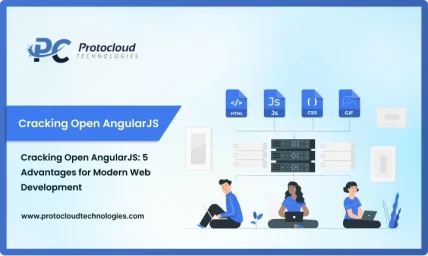
AngularJS 5 Advantages for Modern Web Development
Web development is a fast industry. Developers need frameworks to help them...
- May 1, 2024

How a WordPress Consultant Enhances Your Website’s Functionality
WordPress Consultant - Building and keeping a strong online presence is imp...
- Mar 30, 2024

18+ Free Intermittent Fasting Apps – Non-subscription 2024
Free Intermittent Fasting Apps -The global wellness landscape is buzzing ab...
- Mar 28, 2024

The key steps to successful Mobile App Design and Development
In today's digital world, Mobile App Design and Development are more than ...
- Jun 23, 2023
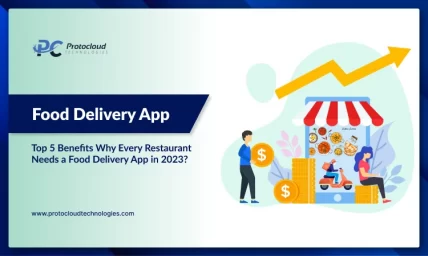
Top 5 Benefits Why Every Restaurant Needs a cheapest food delivery app in 2024?
In this blog, We will explain why investing in a cheapest food delivery app...
- Oct 9, 2021
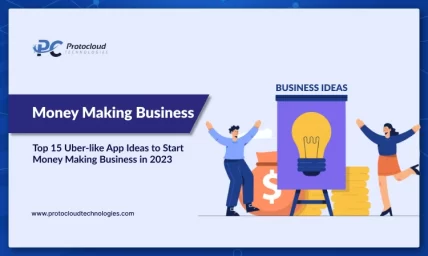
Top 15 Uber-like App Ideas to Start Money Making Business in 2023
The world is inevitably changing at bolt speed. With users looking for conv...
- Sep 8, 2021
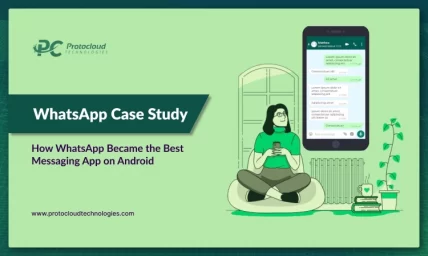
Case Study: How WhatsApp Became the Best Messaging App on Android
Do you want to know how WhatsApp became the best messaging app on android? ...
- Aug 28, 2021

Top 10 Free Study Mobile Apps For Students & Kids in 2023
It has not been long when parents and teachers tried everything to stop the...
- Aug 20, 2021
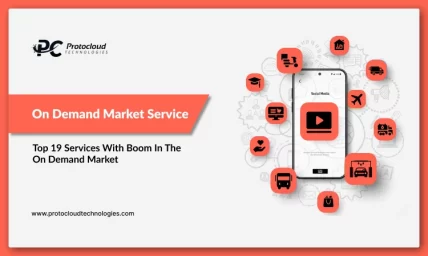
Top 19 Services With Boom In The On Demand Market
You have seen how the on-demand industry has shown tremendous growth in the...
- Aug 18, 2021
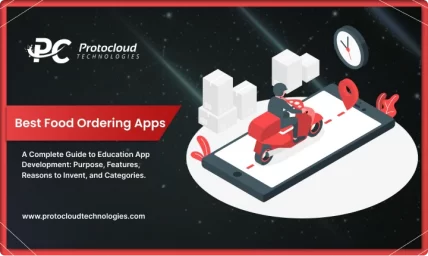
9 Best Online Food Ordering Apps That Are Liked By Customers in 2023
If you look around you can easily find delivery guys of various food orderi...
- Aug 16, 2021

Benefits of Using Mobile App And Top 11 App Ideas For Education Industry
Recently, we have seen how the education field has changed and is moving in...
- Aug 11, 2021
1 Reply to “Interesting Facts And Features of OLA”
Yes, all is logical
Leave a Reply Cancel reply
Your email address will not be published. Required fields are marked *
Talk to us and get your project moving!
Let’s discuss your project with our expert and let us know your project idea to turn it into amazing digital product.
Privacy Overview
Ola Electric
The products offered by Ola Electric include Ola S1 scooter models—Ola S1 Pro, Ola S1 Air, Ola S1 X+, Ola S1 X (2 kWh), and Ola S1 X (3 kWh), which are built on the current EV scooter Generation 2 platform. Compared to the Generation 1 platform, the Generation 2 platform improves several important aspects of the EV scooters, including motor power, battery performance, range, acceleration, and speed.
The current line of second-generation EV scooters includes,
- Ola S1 Pro – flagship premium EV scooter offers an extended driving range of up to 195 km, a top speed of 120 km per hour.
- Ola S1 Air – second premium EV scooter offering a driving range of 151 km with a 6 kW peak motor power.
- Ola S1 X+ – sold at a lower price than the Ola S1 Air, the Ola S1 X+ features a driving range of 151 km.
- Ola S1 X (2 kWh) and Ola S1 X (3 kWh) – offering a driving range of up to 151 km and a 3.5-inch segmented display available in two battery capacity configurations.
The company also intends to apply the same platform strategy to its recently unveiled motorbike lineup, which consists of the Diamondhead, Adventure, Roadster, and Cruiser models.
Furthermore, with the help of the Ola Electric website and the company’s digitally enabled pan-Indian sales and service network, the products are sold through a D2C omnichannel strategy. Consumers have two options for buying the Ola EV scooters – they can order them via the Ola Electric website or visit one of the nearest centres, where staff members will let them view and test drive the EV scooters before placing an order. The company guarantees a seamless ownership and post-purchase servicing experience through the widespread network.
Financial Highlights
Balance sheet.
Income Statement
Cash Flow Statement
Inferences that can be drawn from the above statements are as follows
- Revenue of the company significantly increased by 42% to INR 2,799 crore compared to INR 1,970 crore in FY 2022.
- Net Loss reportedly halved to about INR 772.25 crore in FY 2023 from INR 1,522.33 crore in FY 2022.
- Since the company is burning cash heavily, they are relying on capital financing to cover operational costs.
NOTE – Ola is not a listed entity, so its financials are not reported on public domains. Therefore, the authenticity of these figures cannot be confirmed.
SWOT Analysis
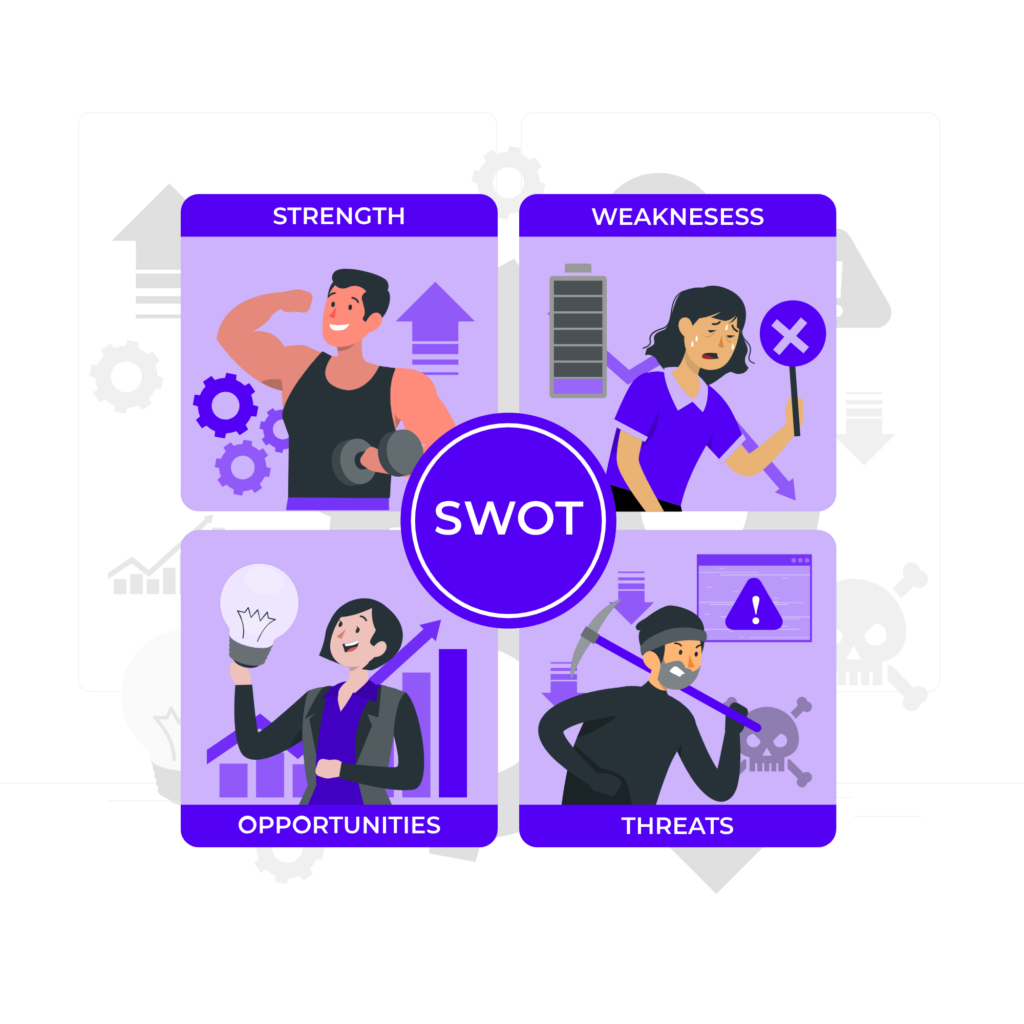
- Ola is leading the rapidly expanding electric two-wheeler market in India; Ola Electric is a pure EV player and a major force in the country’s electric vehicle landscape.
- Driven by a visionary founder, the company benefits from a team of seasoned leaders and has received several accolades, such as India 30 under 30 from Forbes India in 2014 and Entrepreneur of the Year from the Economic Times in 2017
- The company’s emphasis on R&D drives its internal capacity to create EV technology. Ola also conducts research and development (R&D) in the US, the UK, and India to develop innovative EV goods and essential EV parts, including motors, battery packs, and vehicle chassis.
- Ola has the biggest integrated and automated E2W manufacturing plant in India in terms of production capacity, and most of its EV components give them enhanced control of the supply chain.
- Currently, Ola Electric offers just a few scooter models, which might limit their appeal to a broader customer base with diverse needs.
- Building a robust service and after-sales network across India can take time and resources.
- Some initial batches of Ola scooters faced quality concerns. If not addressed effectively, this can damage the brand reputation and customer trust.
Opportunities
- The Indian electric two-wheeler market is projected to grow significantly in the coming years. This presents a big opportunity for the company to capture a large market share.
- Ola Electric can explore expanding its product range to cater to different segments, like high-performance electric scooters or motorcycles.
- It can also explore opportunities for vertical integration , such as setting up battery manufacturing facilities, to control costs and ensure supply chain resilience.
- The company is in the early stages of development . It lacks the extensive track record of more established players in the market. Adding fuel to fire, its operations have resulted in accumulated losses and a negative cash flow.
- Failure to capture and retain a loyal customer base could severely impact the business in all aspects.
Ola has emerged as a significant player in the Indian ride-hailing and electric two-wheeler market. The company is well-positioned to capitalise on the future growth in both these sectors. However, they face challenges like limited product range, a nascent service network, and intense competition from competitors.
Addressing these weaknesses alongside navigating external threats like price moderation, battery technology, and charging infrastructure will be important for the company’s long-term success. Their strategic decisions and ability to adapt to market dynamics will determine their ultimate performance. Additionally, Ola has hinted at an IPO in the future aiming to raise capital and become a publicly traded company.
Frequently Asked Questions (FAQs)
1. What is Ola known for?
Ans. Ola is known across India as a ride-hailing service and a leading manufacturer of electric two-wheeler scooters.
2. Is Ola planning an IPO?
Ans. Yes, Ola Electric, a subsidiary of ANI technologies, has filed the prospectus with SEBI.
3. Which companies are Ola’s competitors?
Ans. Ola faces tough competition in ride-hailing services from companies like Rapido, InDrive, and Uber. It also faces competition for Ola Electric from established automobile companies like Bajaj, Hero Motocorp, Honda, etc.
4. Is Ola-Electric a new company?
Ans. While Ola Cabs has been around since 2010, Ola Electric, its electric vehicle subsidiary, is a relatively new player.
5. Who is the founder of Ola?
Ans. The founders of Ola are Bhavish Aggarwal and Ankit Bhati.
Disclaimer: The securities, funds, and strategies mentioned in this blog are purely for informational purposes and are not recommendations.
Related Posts

BSE Case Study: Business Model And SWOT Analysis

Voltas Case Study: Business Model And Key Insights
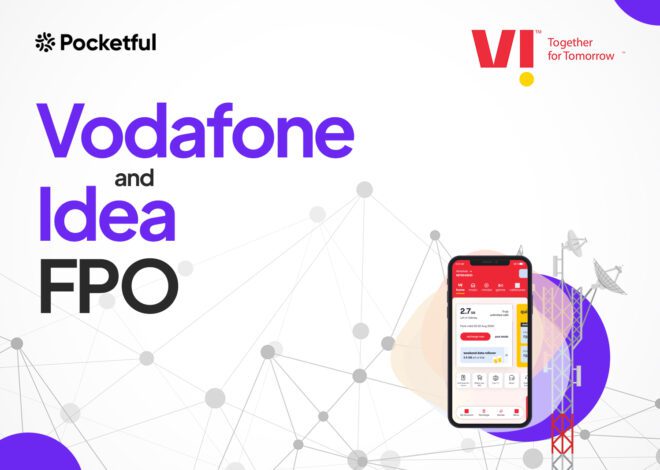
Vodafone Idea: Business Model And SWOT Analysis
We are a concern of pace group. pocketful is an investing platform that helps people be better investors. pocketful unlocks the discoverability of new investment and trading ideas., quick links.
- Open an Account
- Pocketful Web
- Pocketful App
- Investment Tool
- Trading Tool
- Support Portal
- Referral Program
- Calculators
- Stocks Pages
- Government Schemes
- Index Heat Map
- Stock Screener
- Mutual Funds
- Terms & Conditions
- Policies & Procedures
- Privacy Policy
- Press & Media
JOIN THE WAITLIST
Add your details and start your journey toward a better future with Pocketful in your investing career.
You have successfully subscribed to the newsletter
There was an error while trying to send your request. Please try again.

COMMENTS
Oct 16, 2017. 2. One of India's most successful startups, Ola suffers from a common problem— clutter. An app used by millions on the daily provides so many options for customization that the user is often overwhelmed. Going back to the roots , Ola solves a fundamental problem — that of servicing taxi rides with the help of our smartphones.
When we received the case study, I tested various apps to gain insights. After learning about UX design, I used Ola for personal purposes. I had difficulty finding the schedule button to book my ...
Ola case study is a popular success story in the Indian startup ecosystem. It exemplifies the power of innovation, entrepreneurship, and unde. ... By leveraging technology and a user-friendly app, Ola transformed the way people access and use transportation services. It offered a convenient and cashless booking process, real-time tracking, and ...
Ola built their mobile website as a Progressive Web App (PWA). Using just 200KB of data to install, the PWA is at least 300X smaller than downloading the Android app and 500X smaller than downloading their iOS app. Repeat visits use as little as 10KB. This low data consumption translates into a 3.4-second first visit and less than a second for ...
The Ola case study: The story of Ola. The year is 2010. Bhavish calls a taxi service portal to rent a taxi. He has to travel to Bandipur from Bangalore. He's already in a rush and the driver is still not here. Helpless, he sits there waiting for his taxi to pick him up. The driver comes and Bhavish boarded the car.
Less time consuming: Through the redesigned Ola app, the users can consume their time to book a cab. Time consumption leads to more users into the app. ... Improving BookMyShow App's Search and Filter: UX Case Study. Making user's decision-making quick & efficient — with improved visibility of search feature on home and search result ...
This allows people to book cabs at short notice through Ola's app. Ola is India's homegrown ride-hailing app with a little less than 50% market share (as of Uber's 2020 report) in India. ... Toll Collection in case you cross toll junctions in the journey; Ola - User Acquisition. Ola has also got into 3 international markets namely Australia, ...
Download the complete Ola Case Study PPT here. Download Now. To summarise the findings of the survey, the student team found that a decent majority of people are warm to the idea of carpooling and sharing their rides with people. Now that we understand the Ola Cabs audience, let us now turn our attention to the process of identifying the ...
If you find this case study helpful, consider leaving a comment below. Gig economies are the future, and you are in the right place to understand one of the most famous ones in India - the Business Model of Ola. The Ola app offers easy solutions by connecting customers to drivers and a wide range of vehicles across bikes, auto-rickshaws, and ...
Side note: I do not work for OLA, and the views from this case study are strictly my own. Unlike the designers who work at OLA, I don't have full access to all the user data that influenced their current design. ... The current OLA app. #Problem1- Reachability. Source- UXmatters.com. When the user is using the application with one hand, it ...
With respect to downloads, the monthly figure stood at 67.41 million for Ola. The population of Bangalore is around 84.3 lakhs. Active internet users in the city are 6.1M. Target audience: People ...
Ola Case Study - Download as a PDF or view online for free. ... Bangalore) - Auto Rickshaw. • Over 70% of the bookings come through the mobile app! • Ola's revenue is growing at an average of 30% month on month. • 2000 cars get added on the platform every month pan-India. • Ola has raised ~$70mn through venture capital funds and has ...
Gurgaon, India. OLA -Ux Case Study- App Redesign. Ola is a leading ride-hailing company providing transportation services to millions of customers globally. The app, however, has received feedbac Read More. 8.
Product Design,UI/UX,Information Architecture,Figma. UX Case Study - OLA Electric Conceptual App
Ola's on-demand transportation service promises discerning customers a seamless and reliable experience. With just a few taps, the Ola app offers a range of well-priced and flexible ride options, setting a new standard for quality and trust. The ride is designed for ultimate comfort, featuring in-ride entertainment and WiFi.
Interaction Design,UI/UX,App Design,Figma,Adobe Photoshop,Adobe After Effects CC,Principle for Mac
As per a recent study, Uber amassed over 1 billion global downloads in 2022, whereas Ola garnered more than 550 million+ million downloads. Furthermore, Ola exhibited a superior expansion rate in comparison to Uber, with a year-on-year surge of 42% as opposed to Uber's 21%. Business Model Analysis - Ola vs Uber case study.
Success Story of a Start-up - A Case Study of OLA Cabs DOI: 10.9790/487X-2002023037 www.iosrjournals.org 32 | Page and Bangalore, TaxiForSure came up with Magic Trip on their Mobile Application, Uber comes up with different promo code from time to time. OLA - Company profile: Ola initially started off as Olatrip.com a small website venture ...
In comparison, Ola Bike covered 166 million km, and Ola Autos covered another 1200 million km. The company's top bike partner traveled 38,289 km. Ola is recognized as India's fastest startup to be on the list of unicorn clubs. The most common drivers registered on OLA are Sanjay, Suresh, Ramesh, Rajesh, and Santosh.
Ola S1 X (2 kWh) and Ola S1 X (3 kWh) - offering a driving range of up to 151 km and a 3.5-inch segmented display available in two battery capacity configurations. The company also intends to apply the same platform strategy to its recently unveiled motorbike lineup, which consists of the Diamondhead, Adventure, Roadster, and Cruiser models.